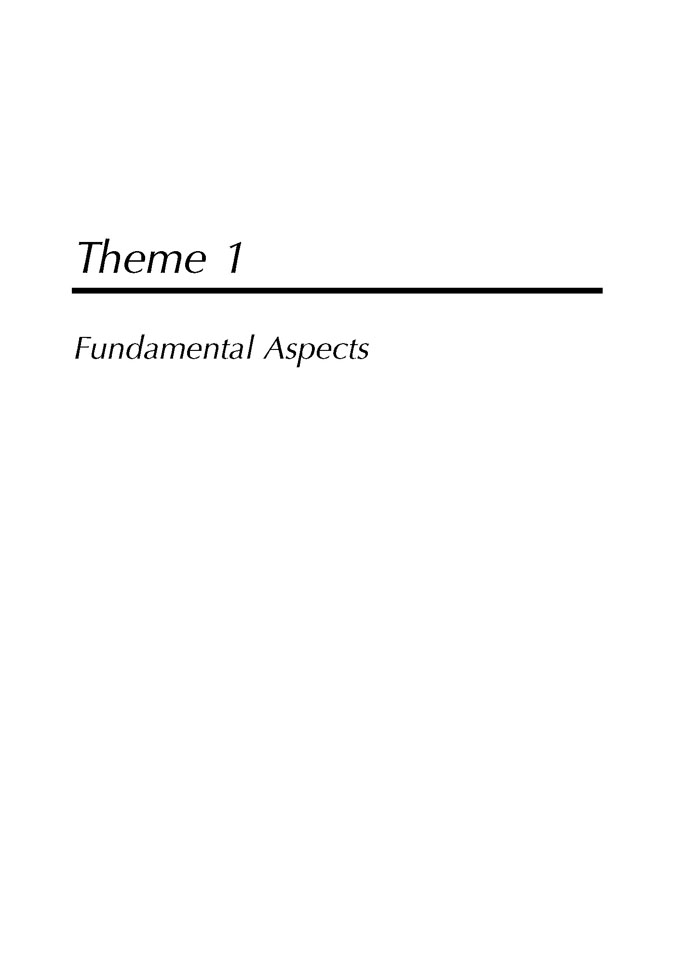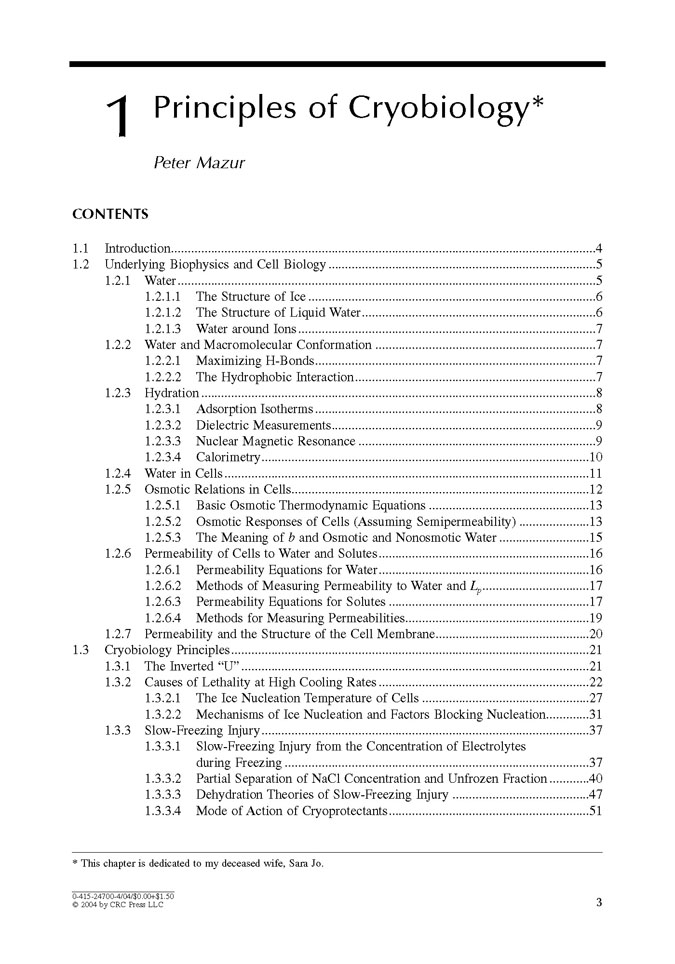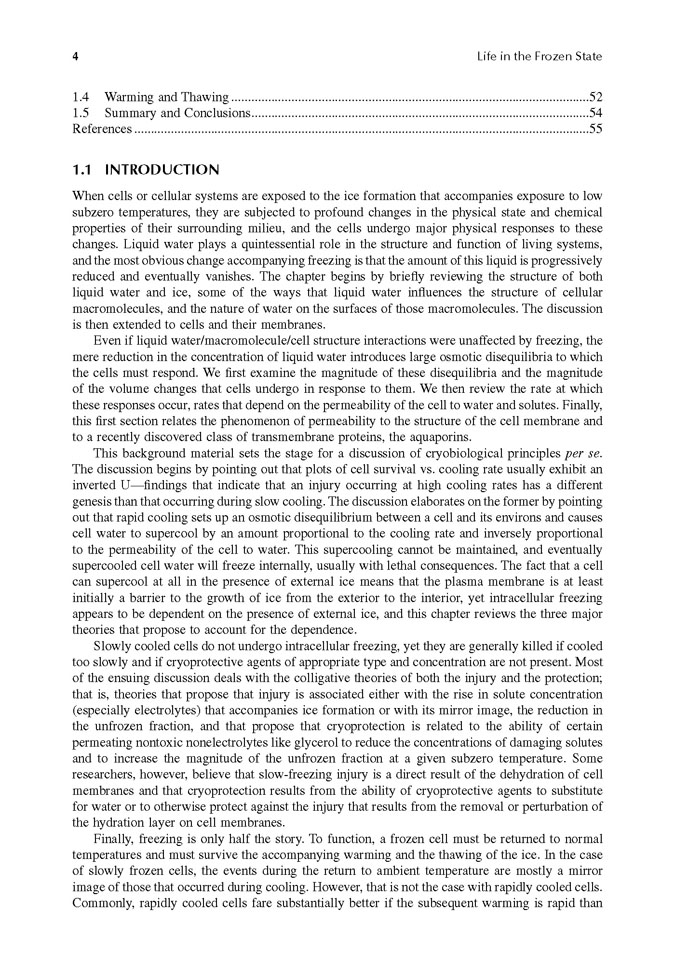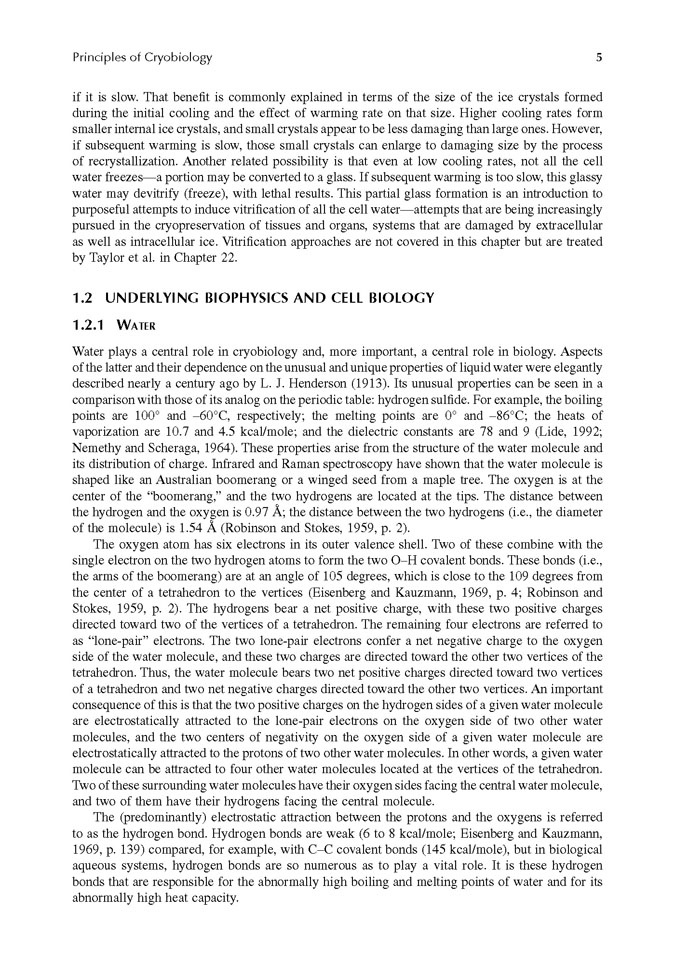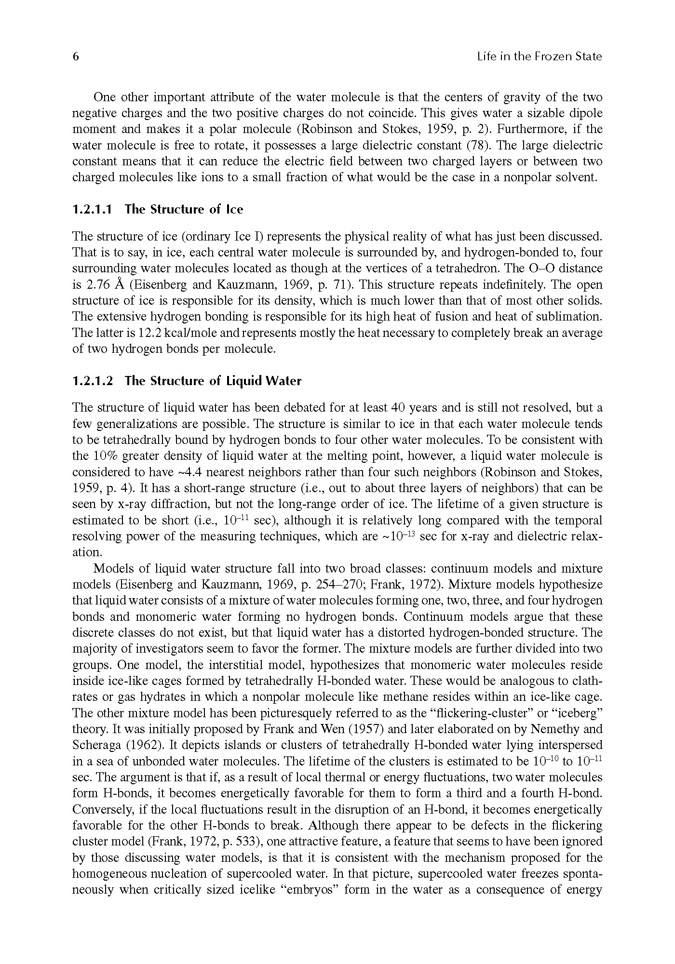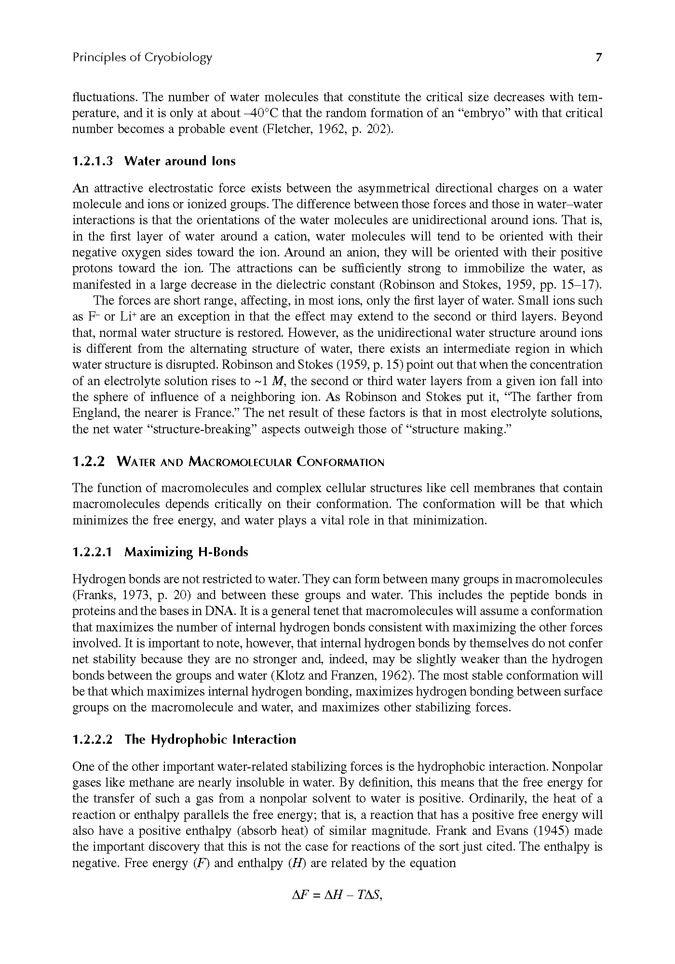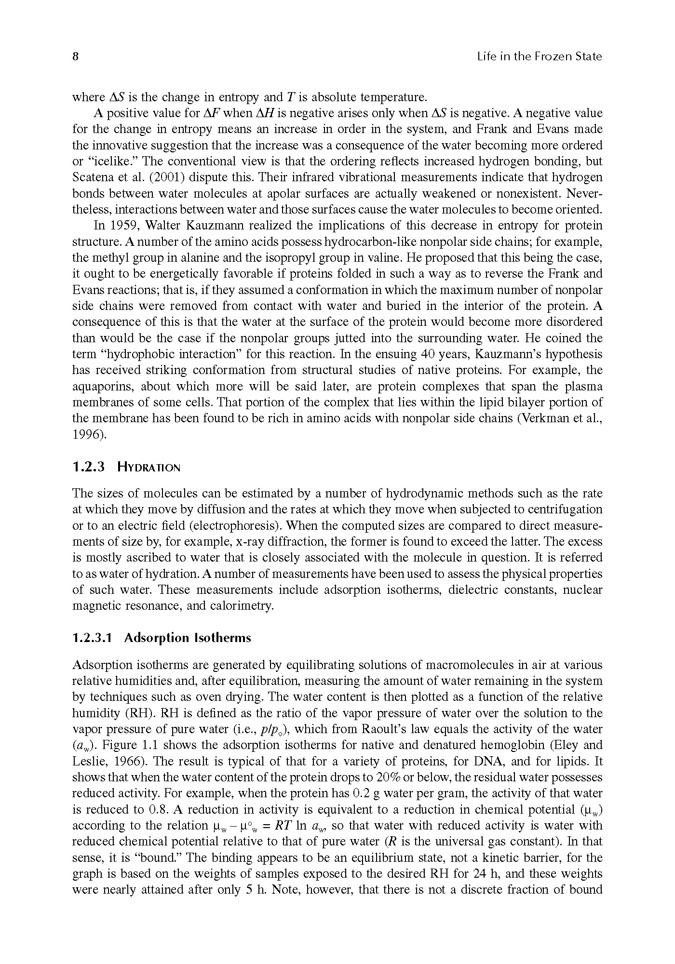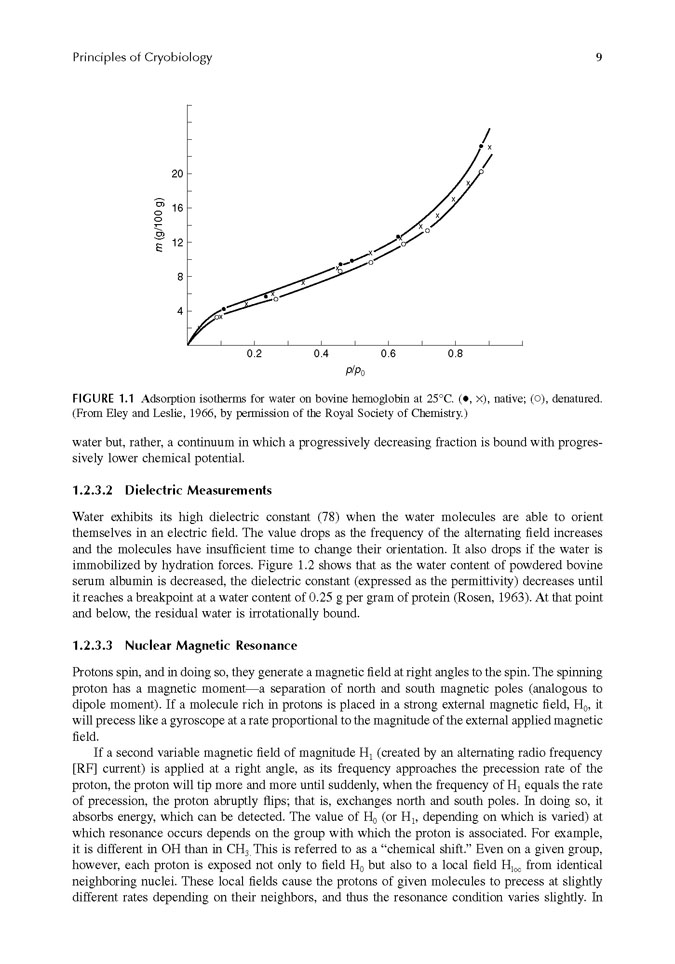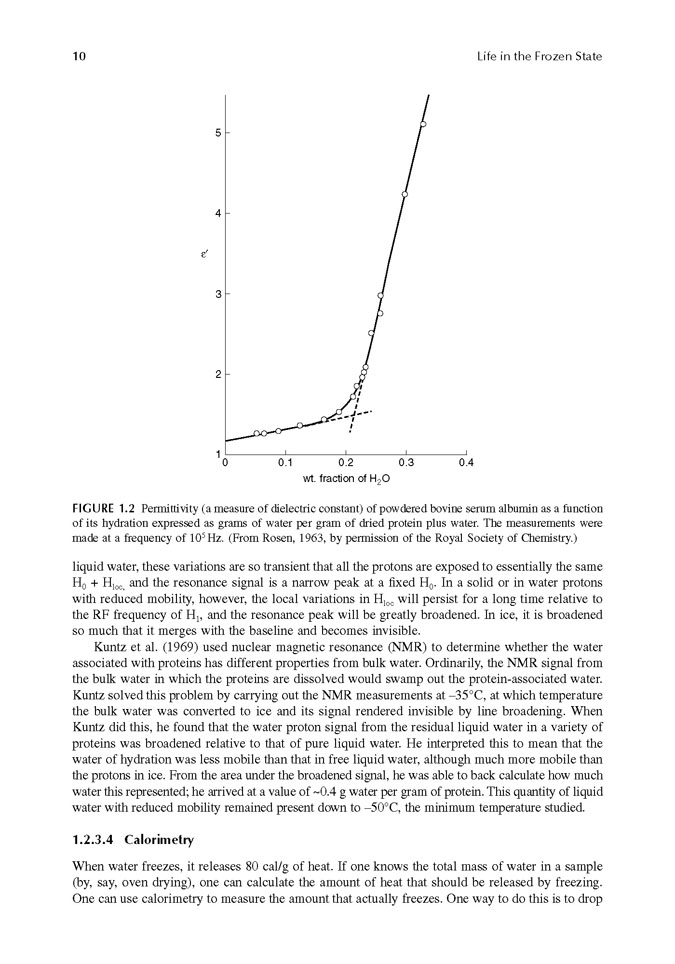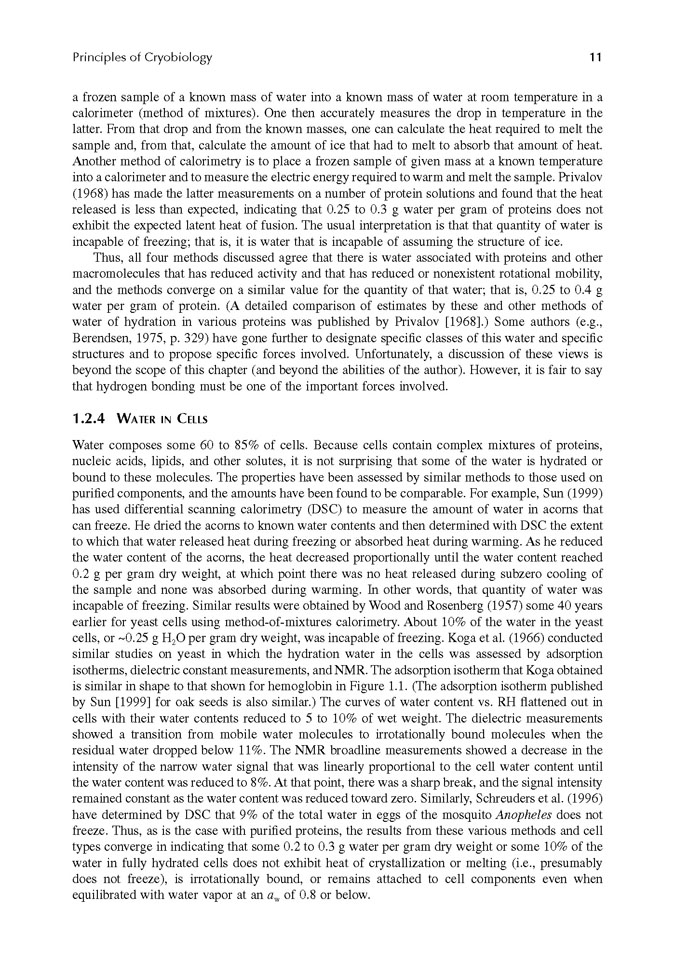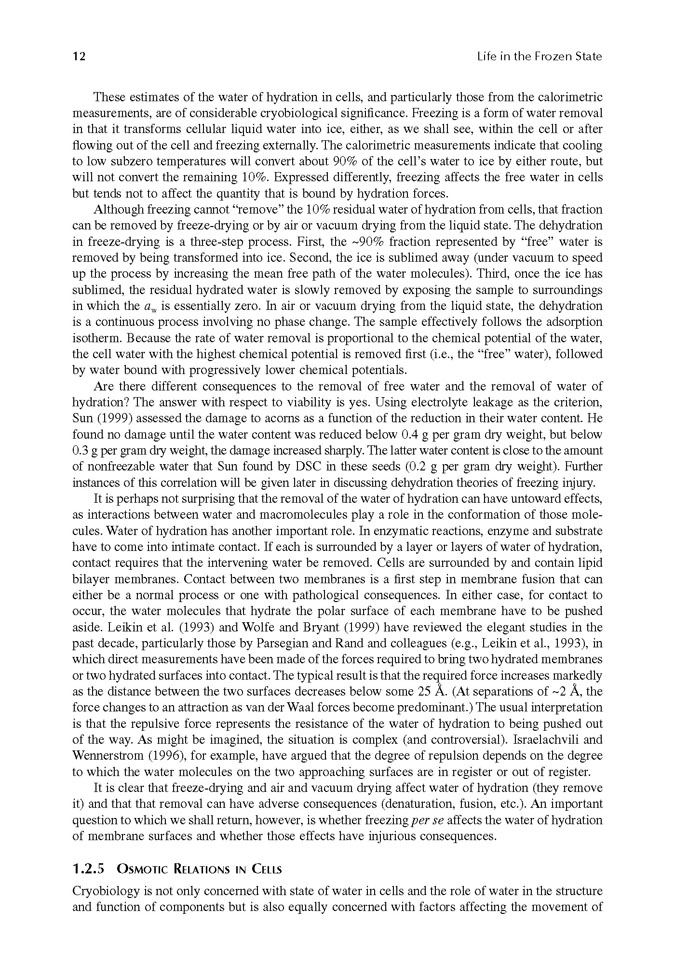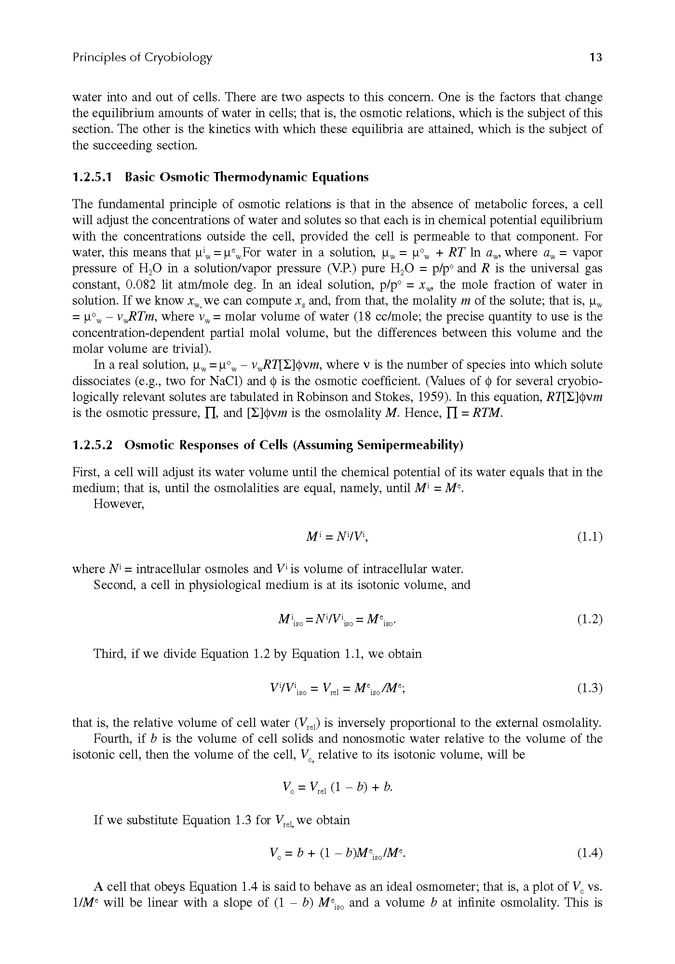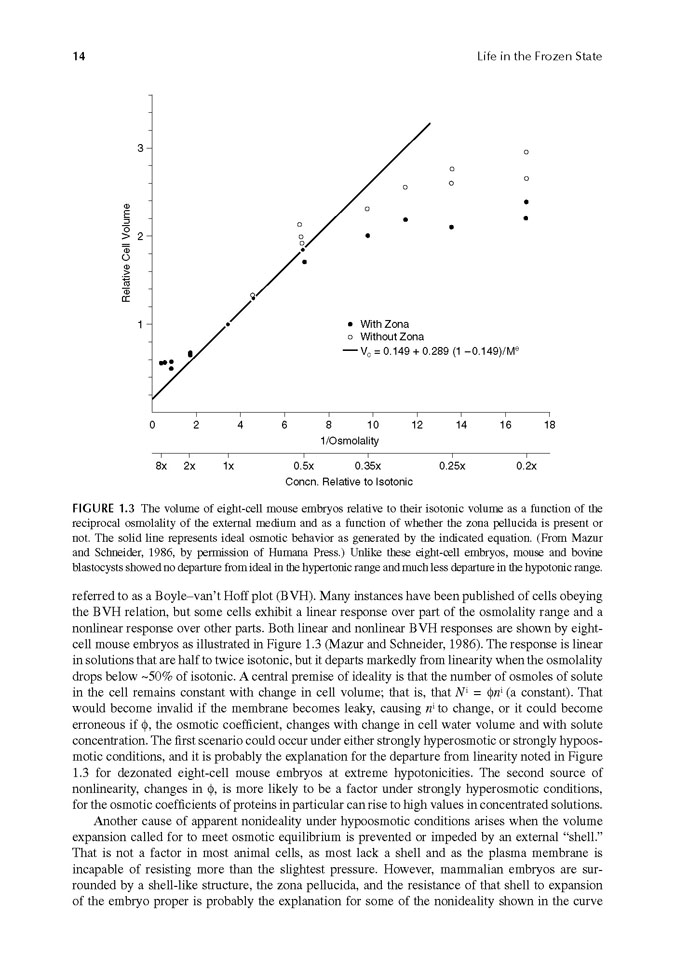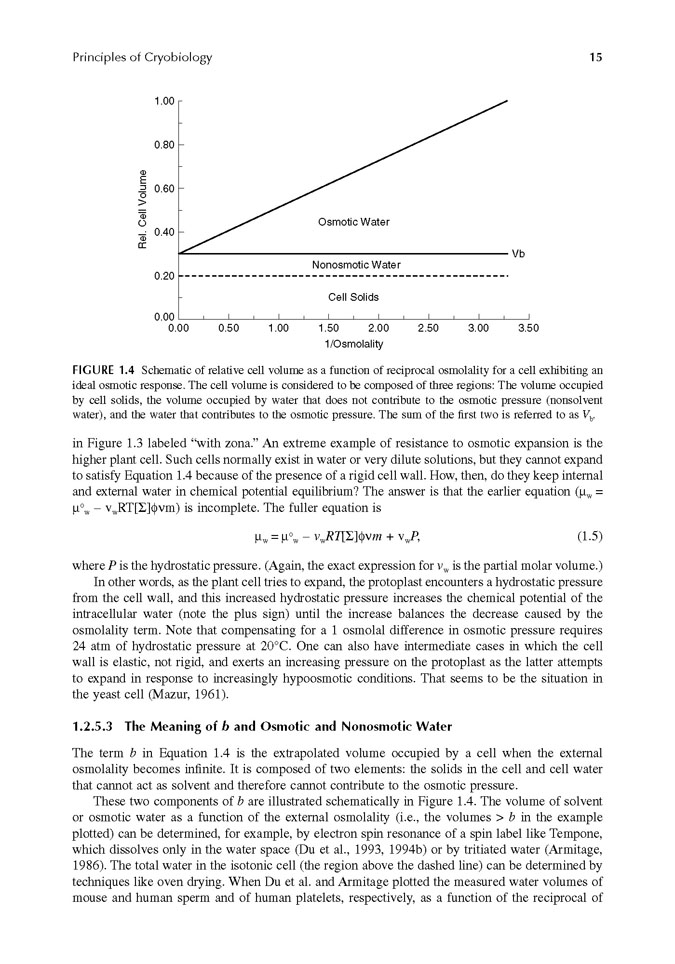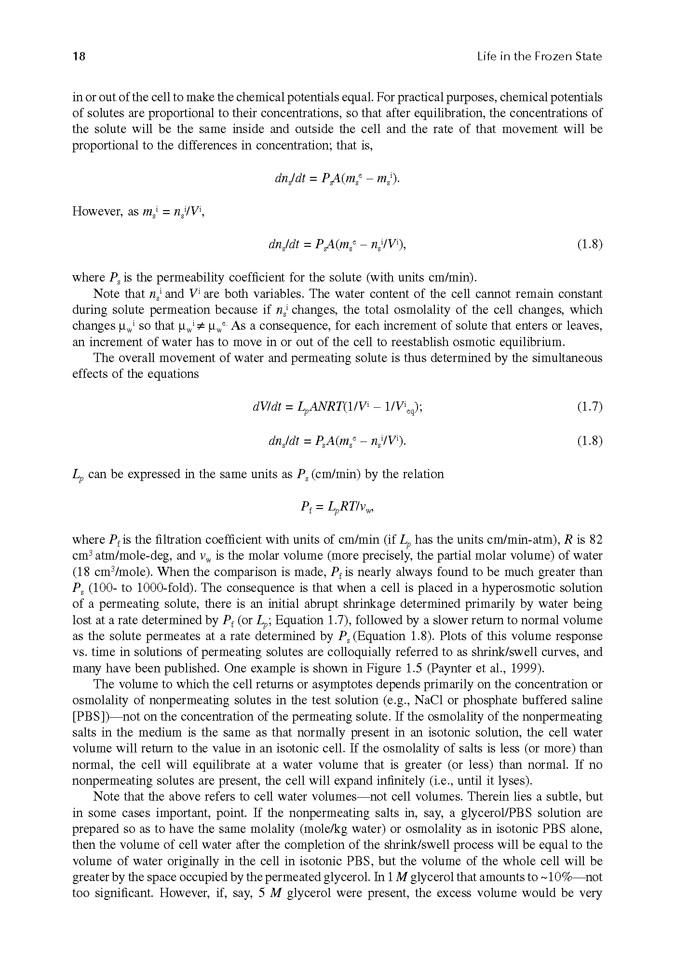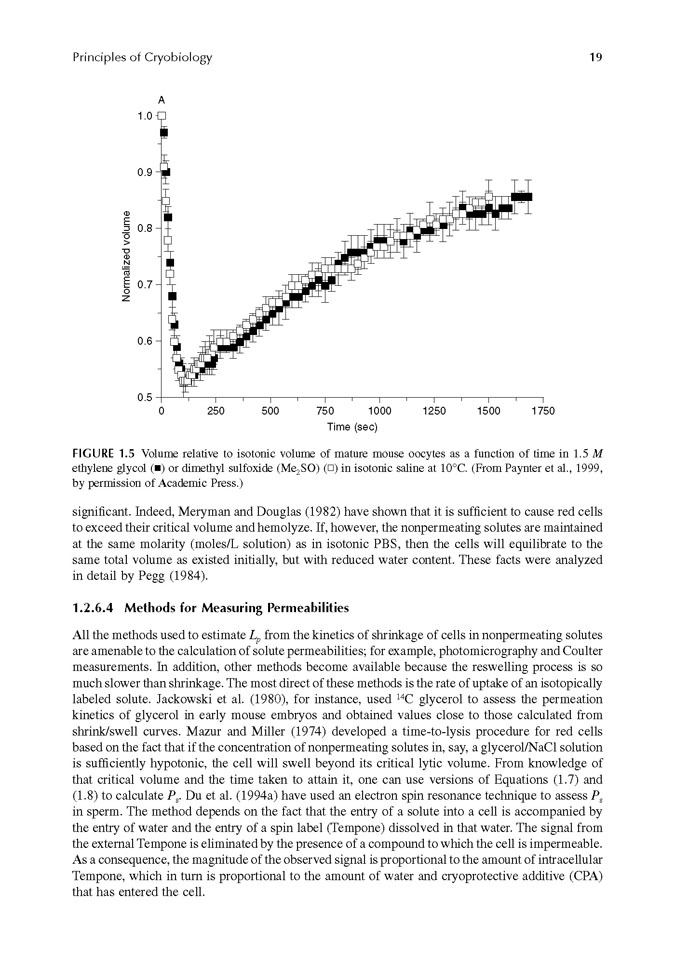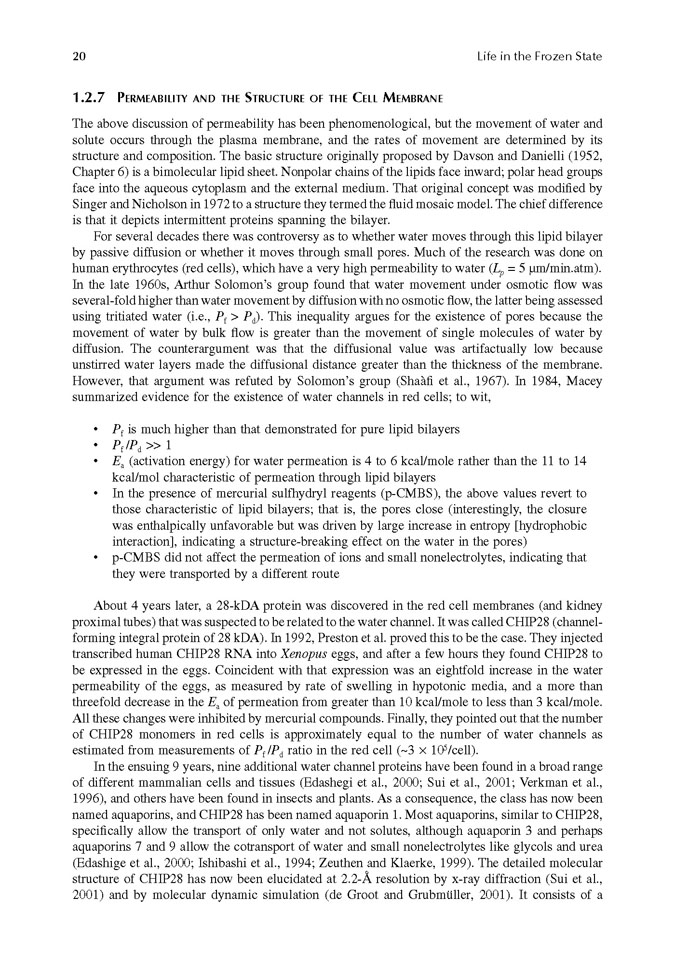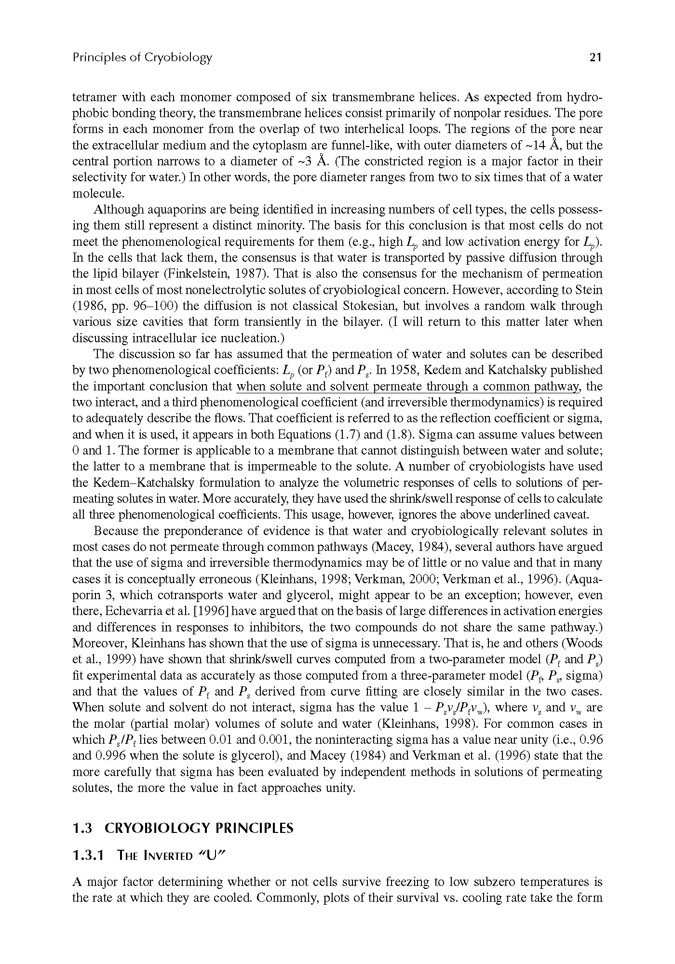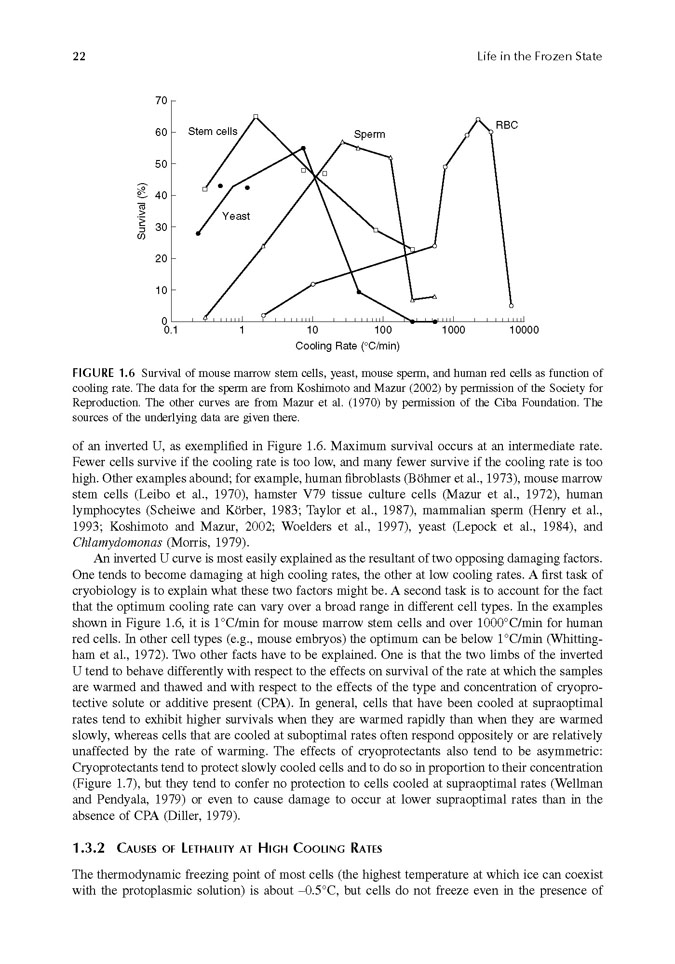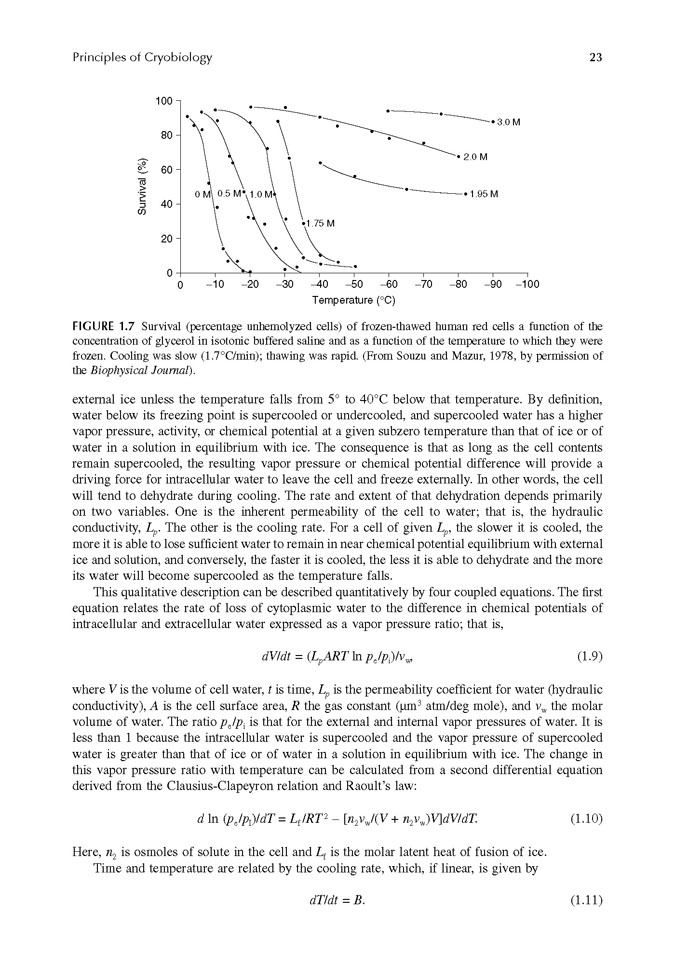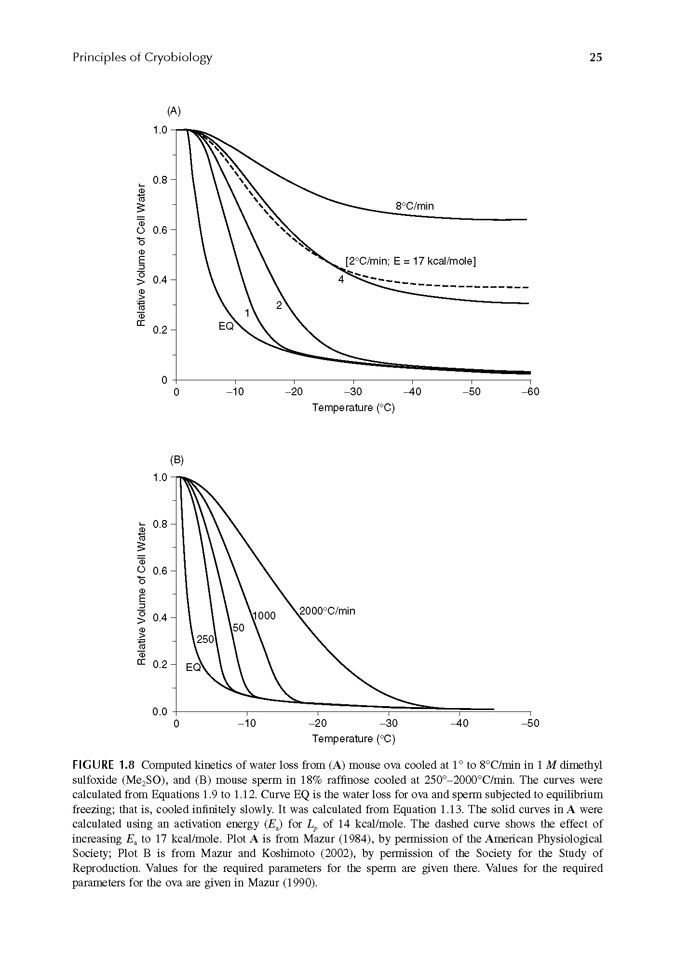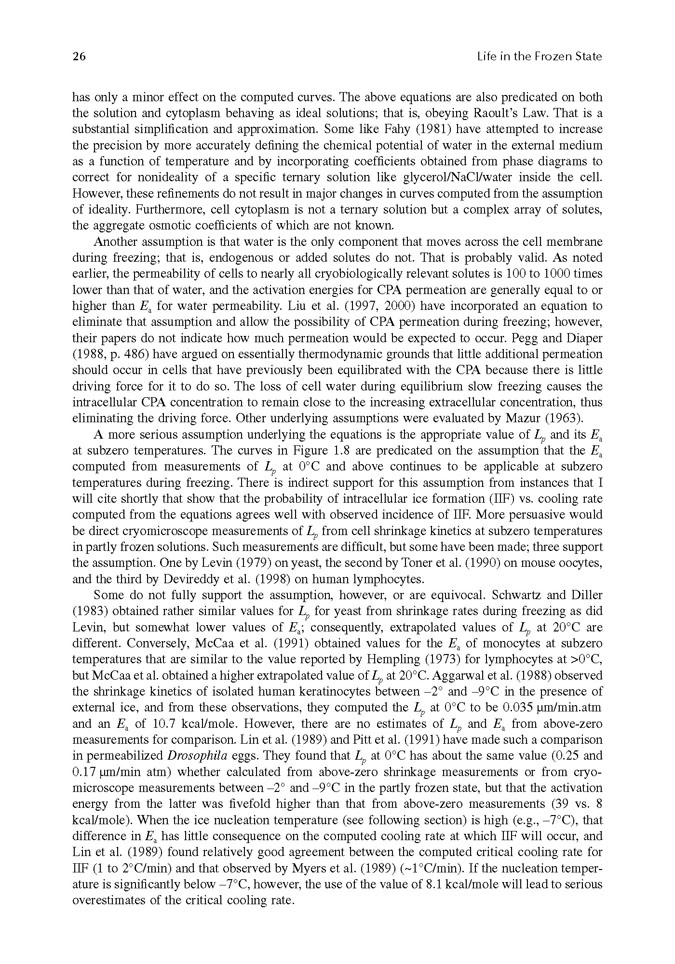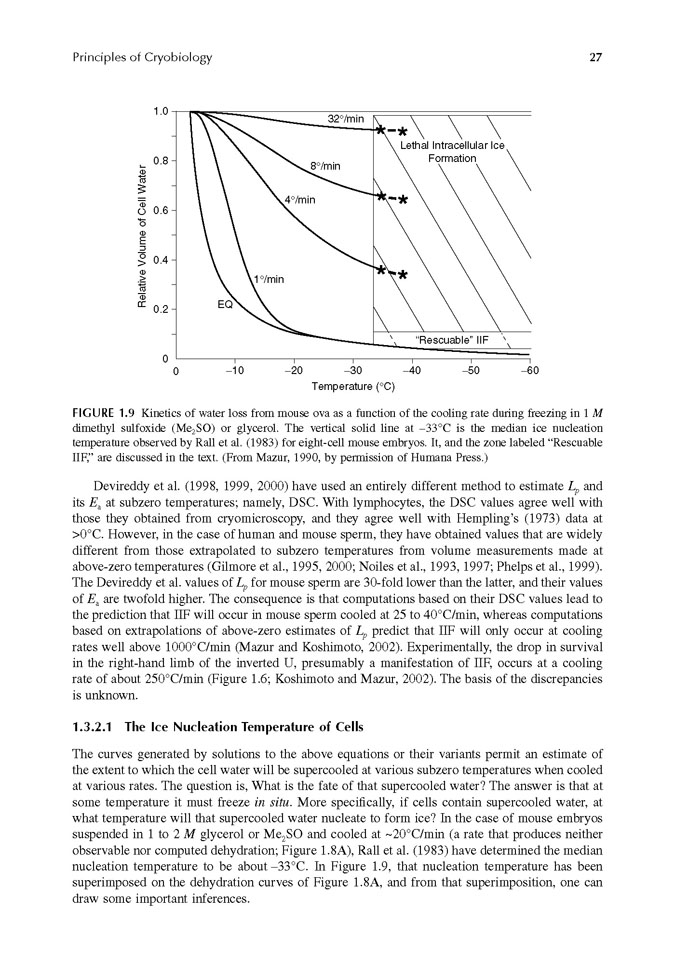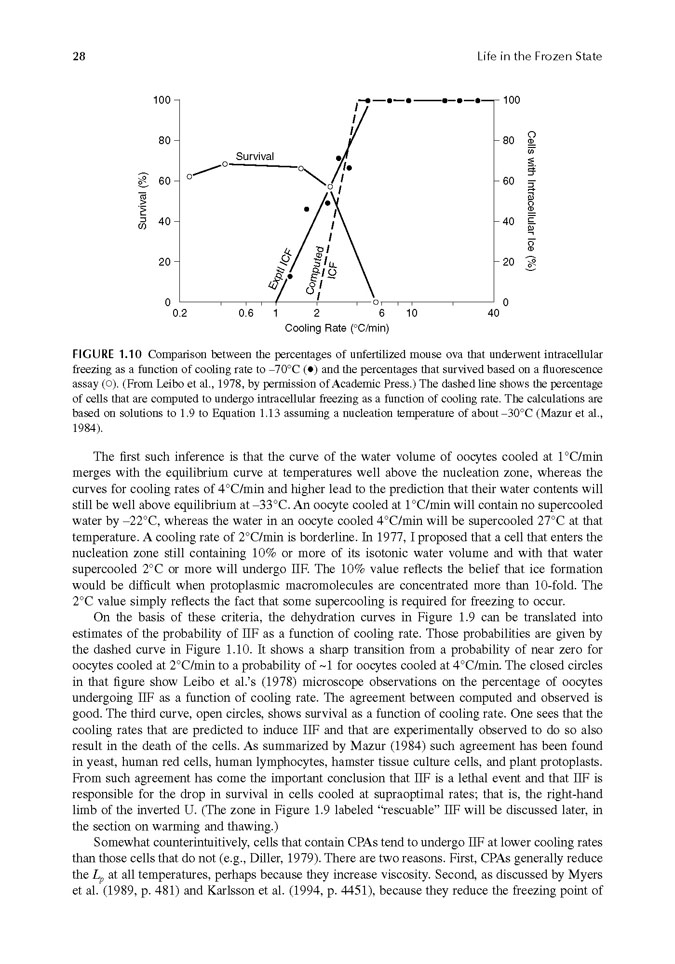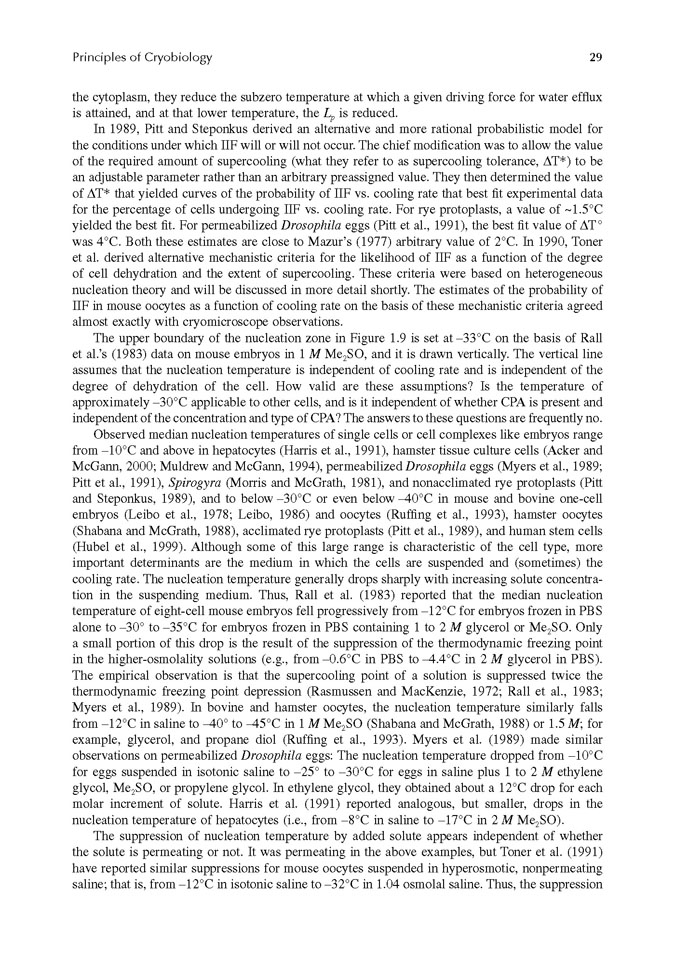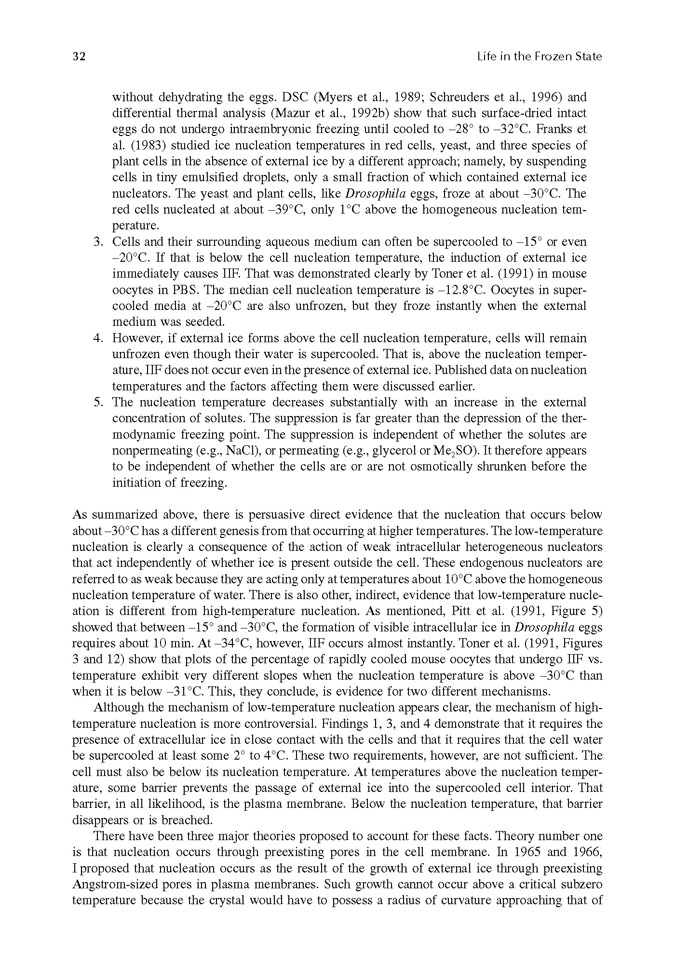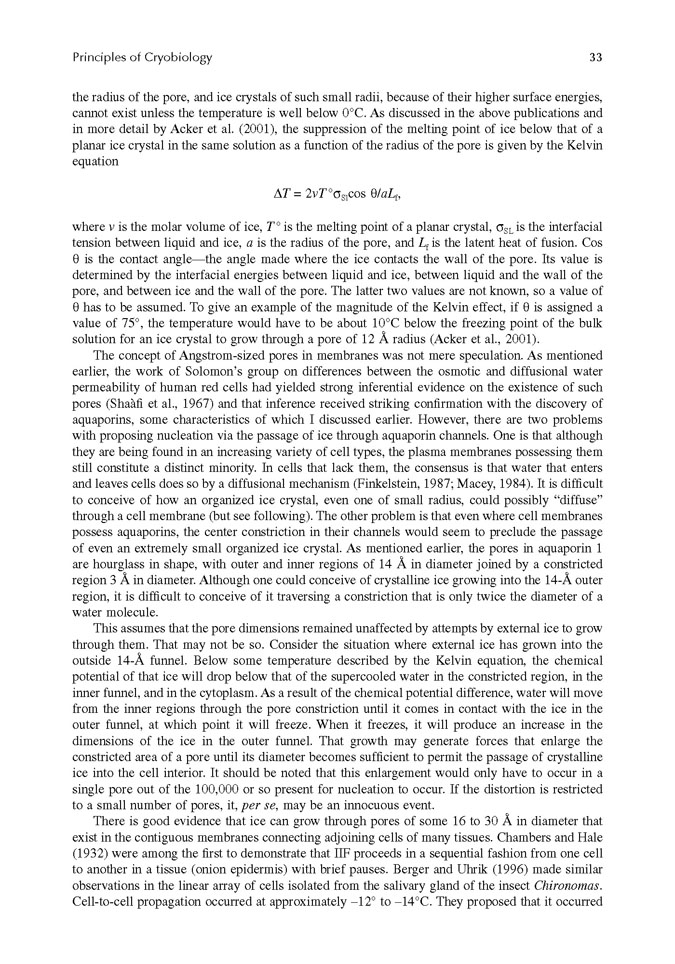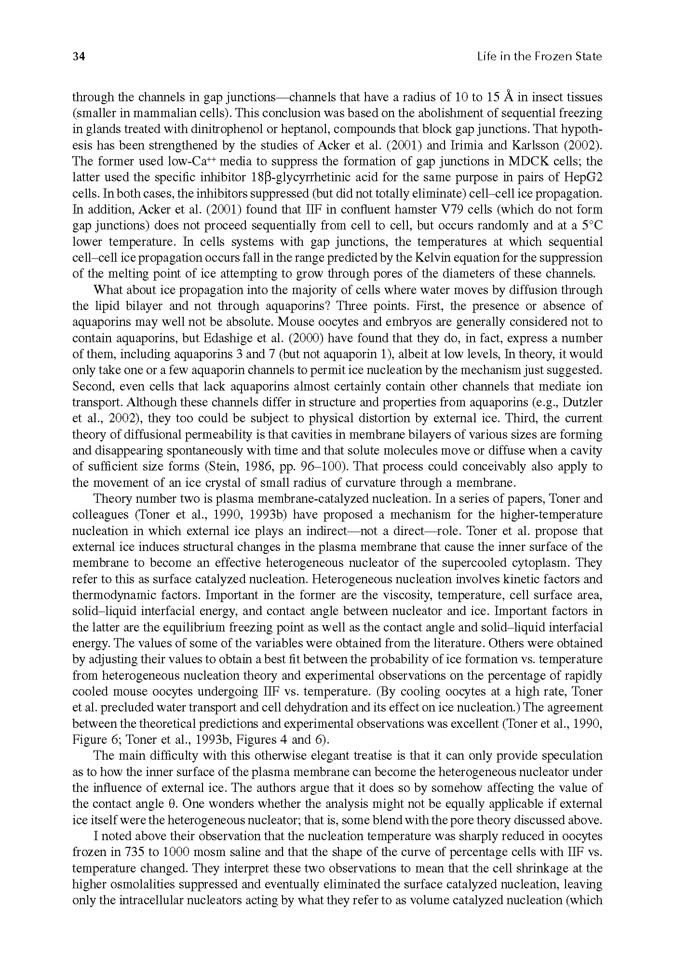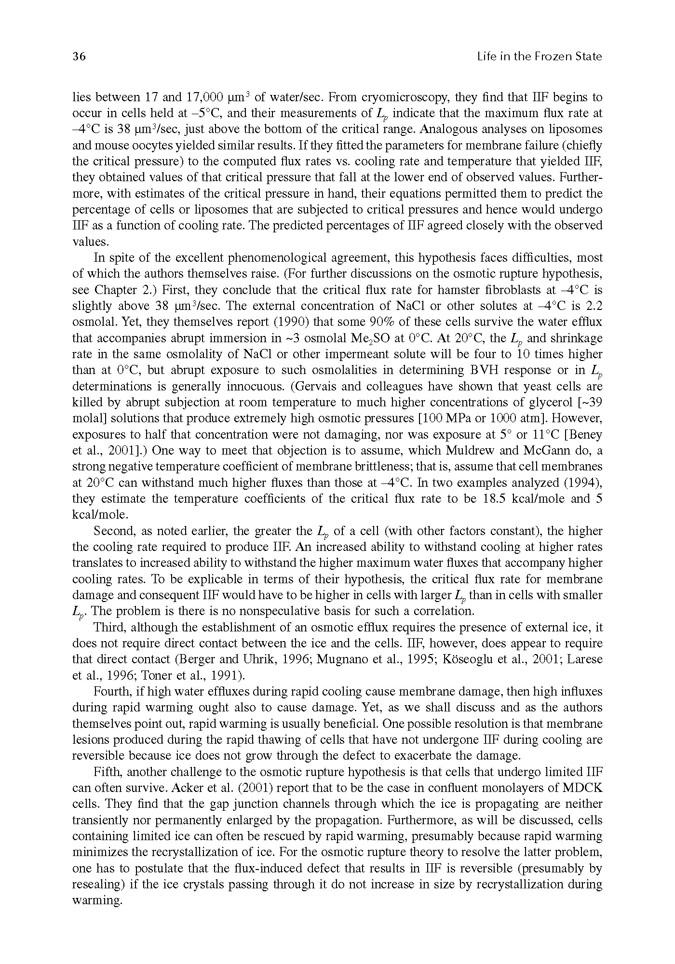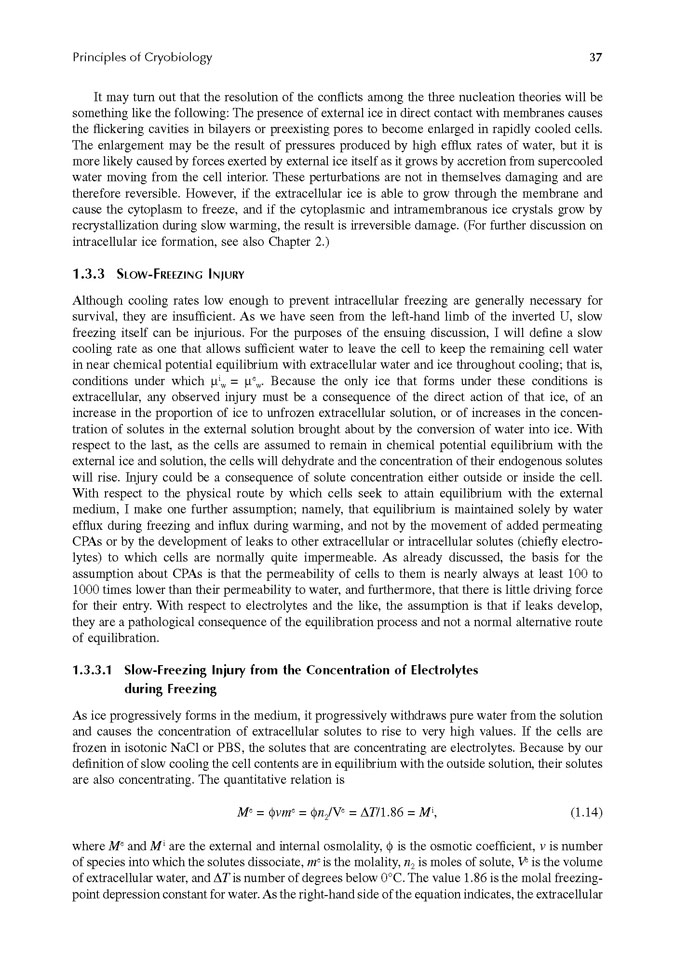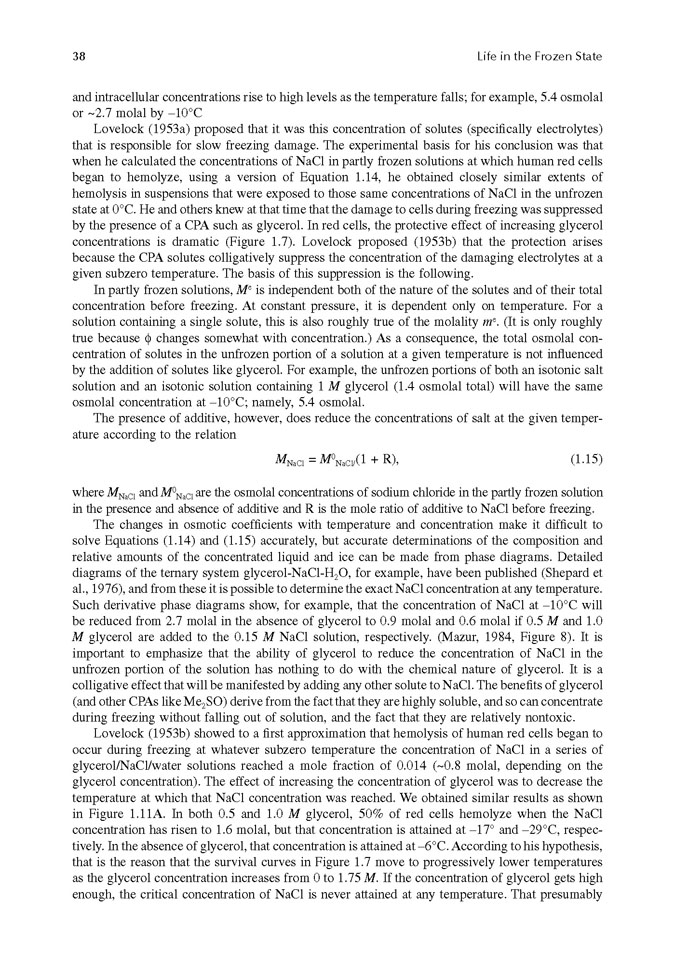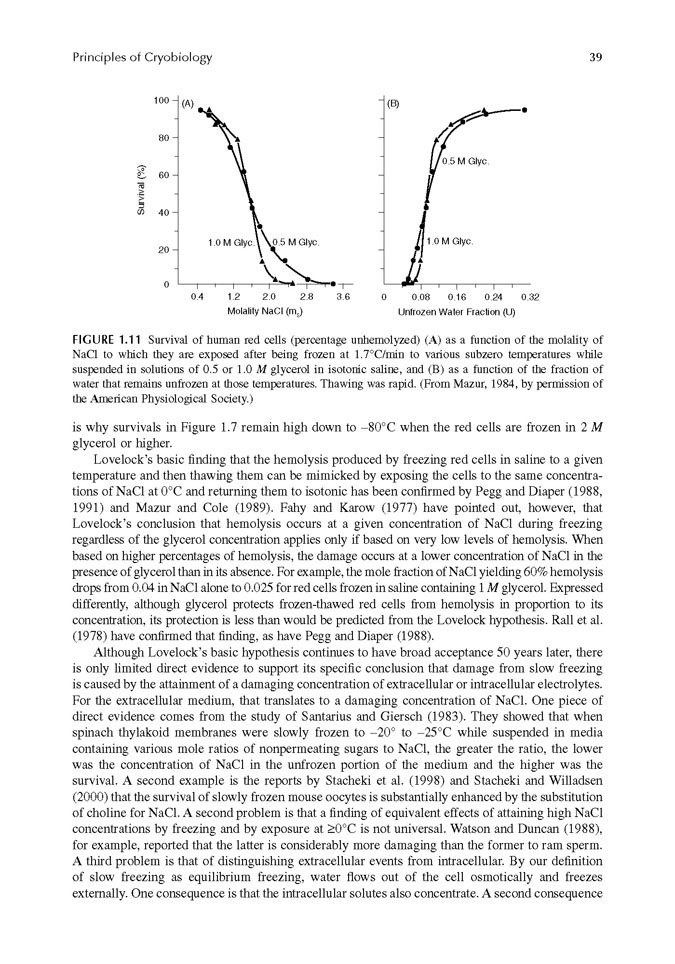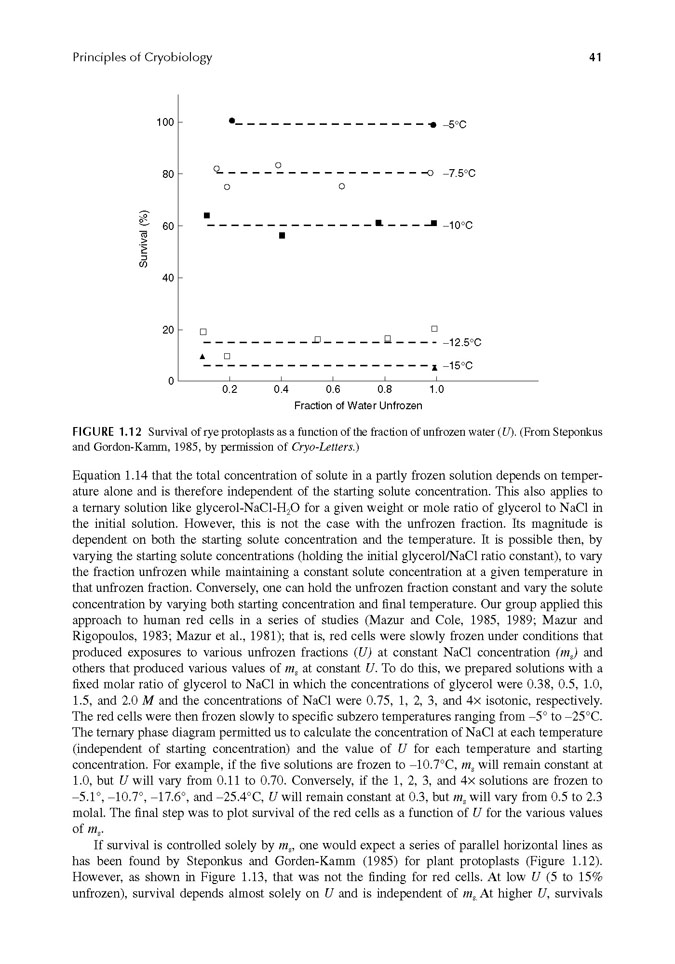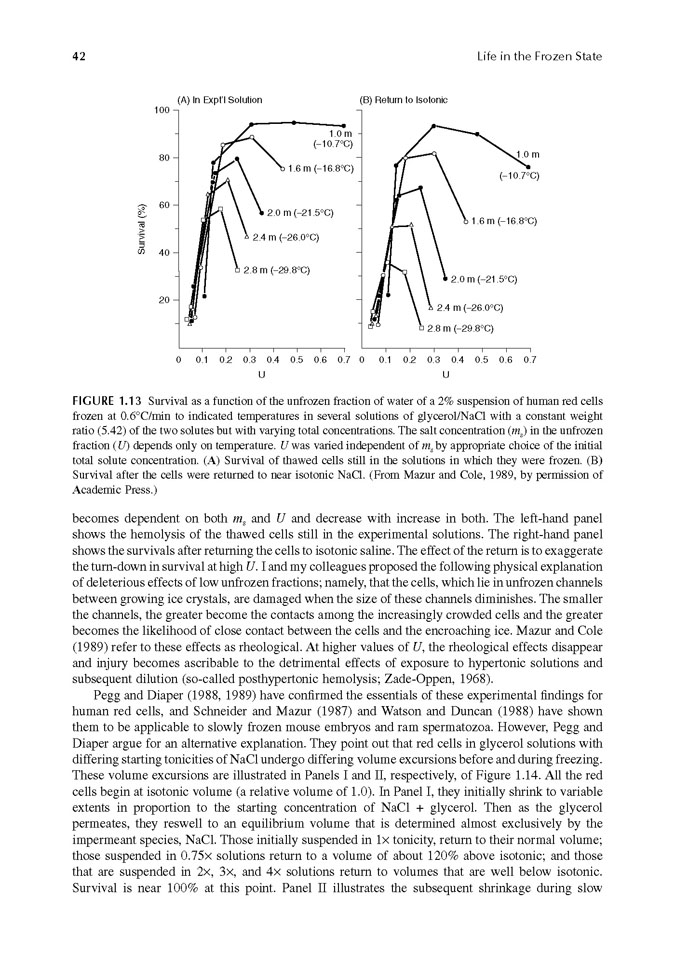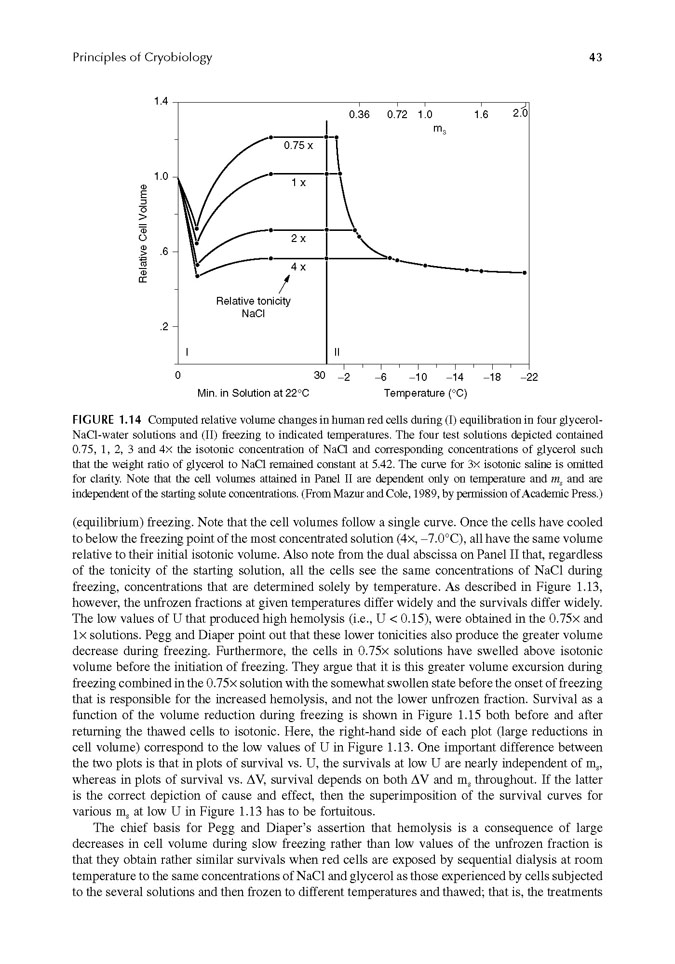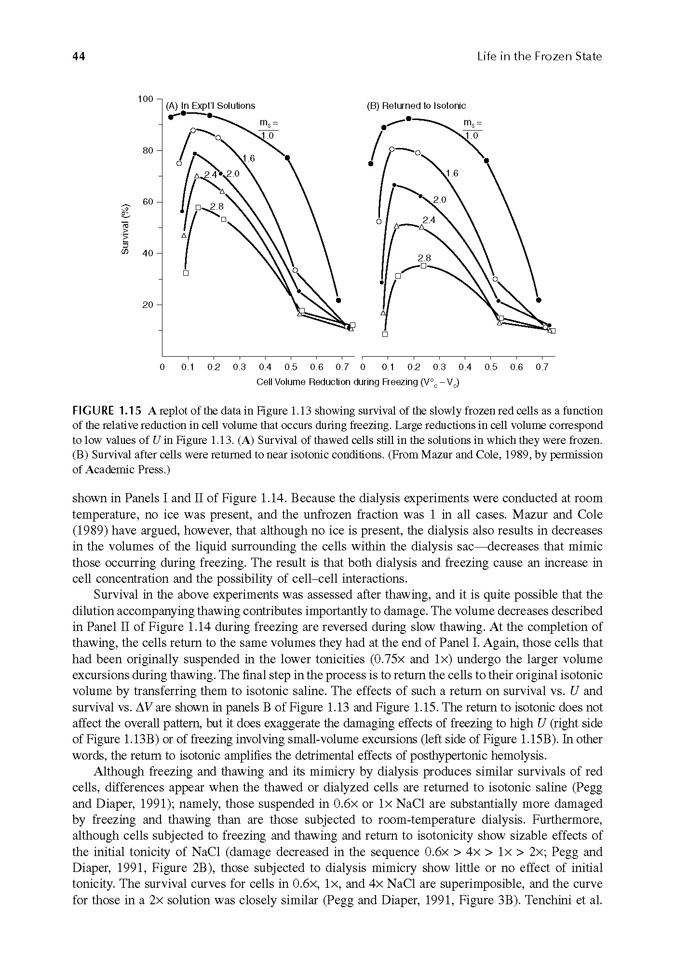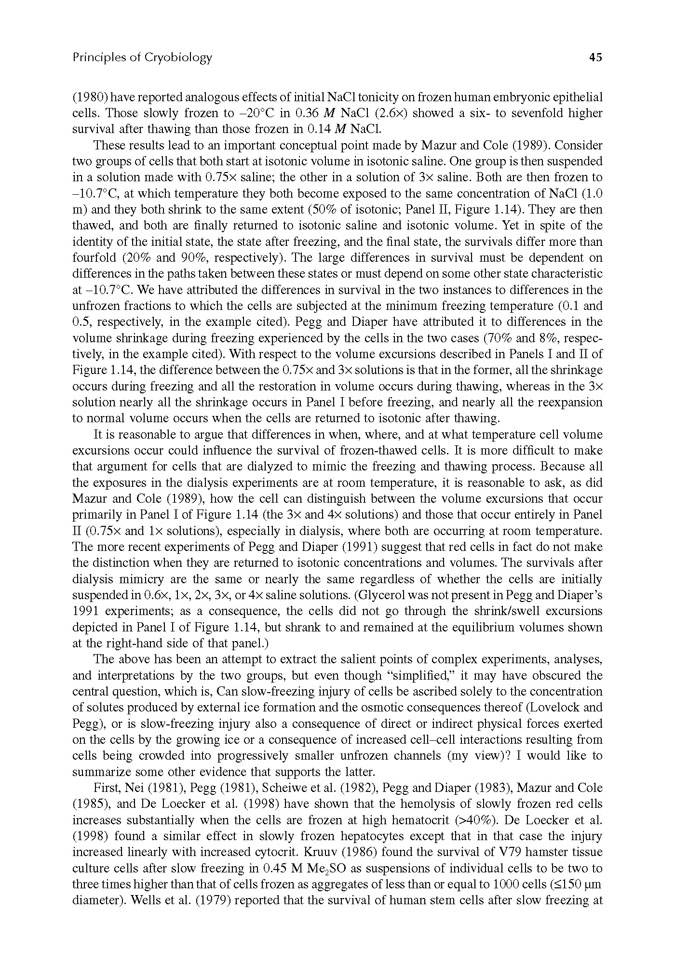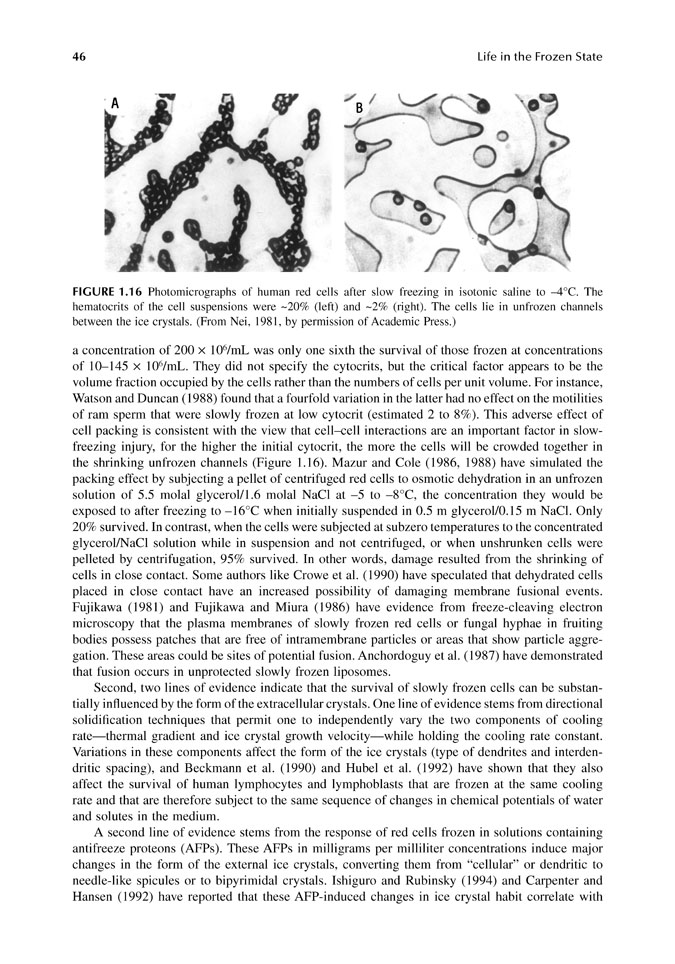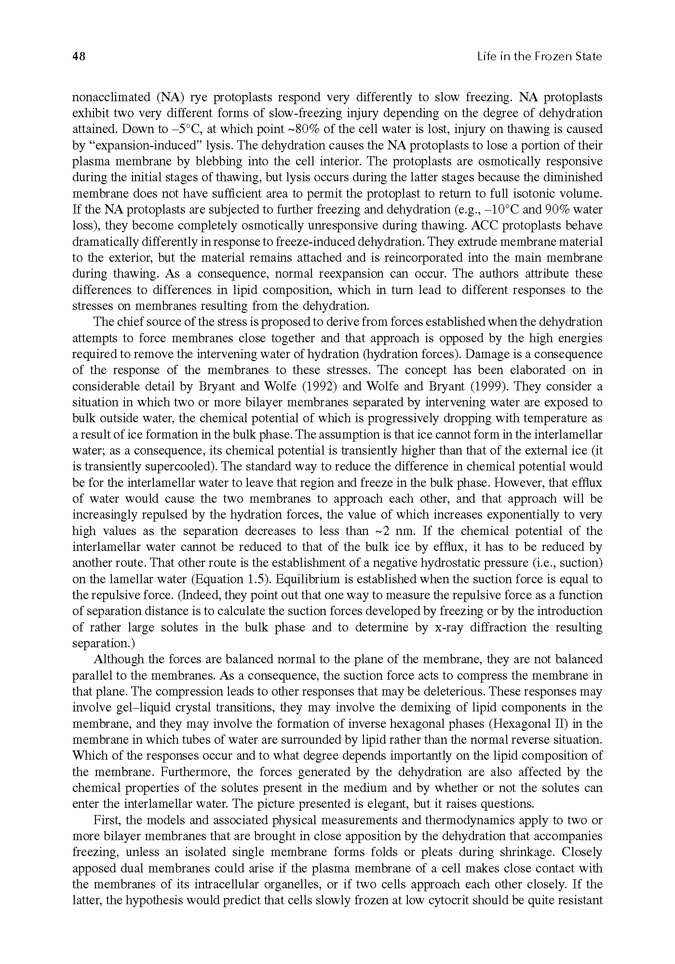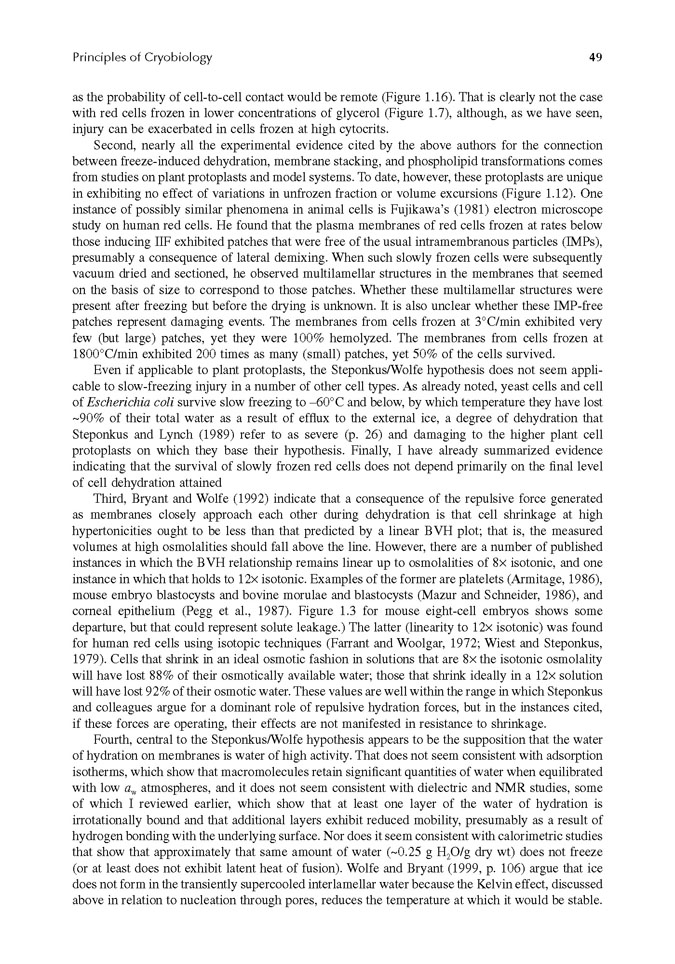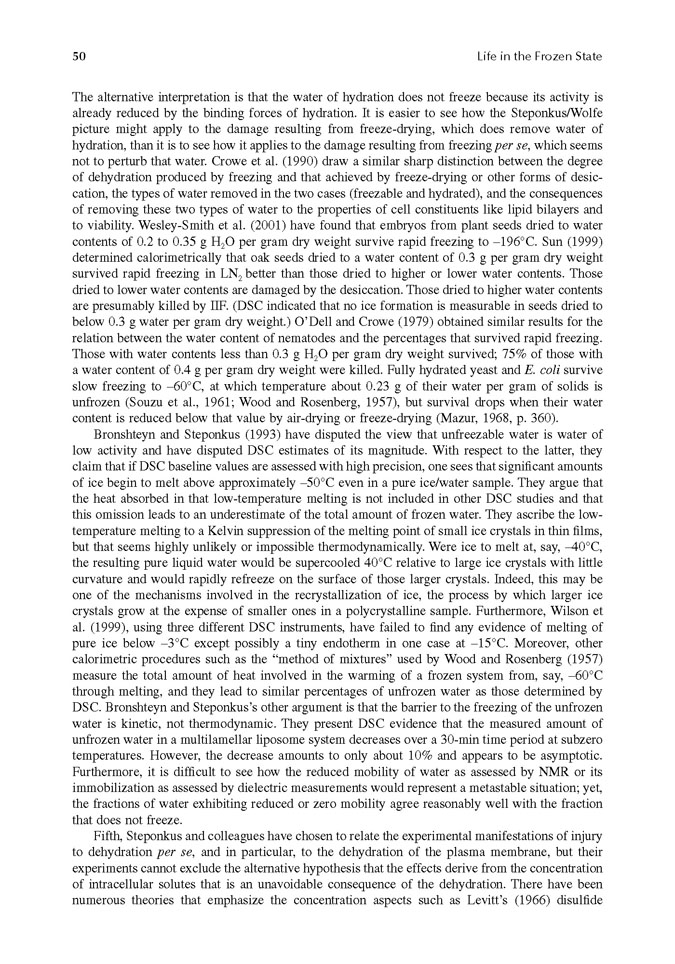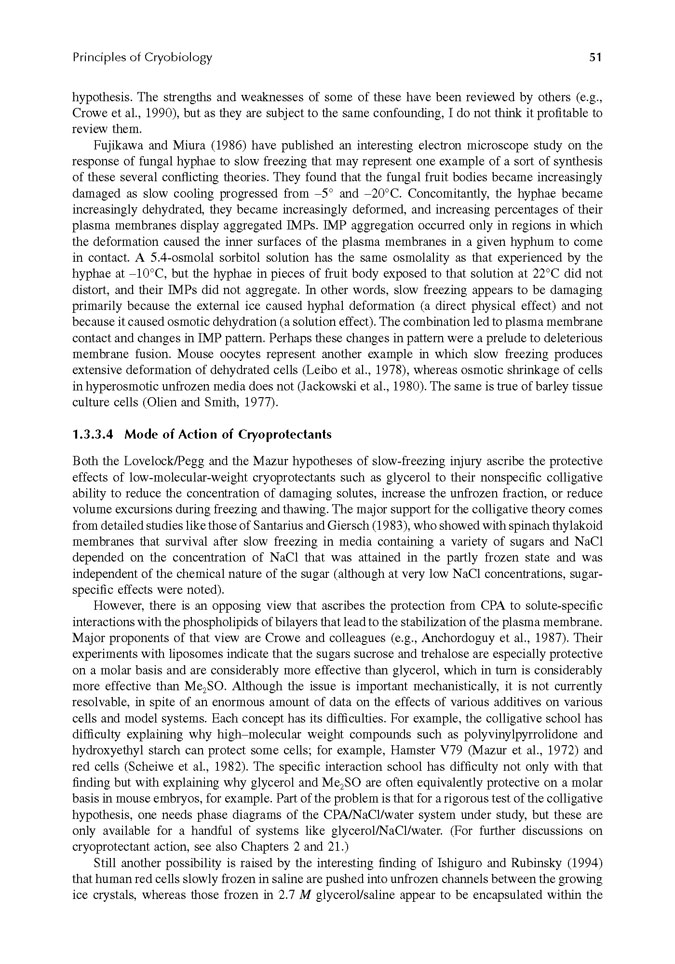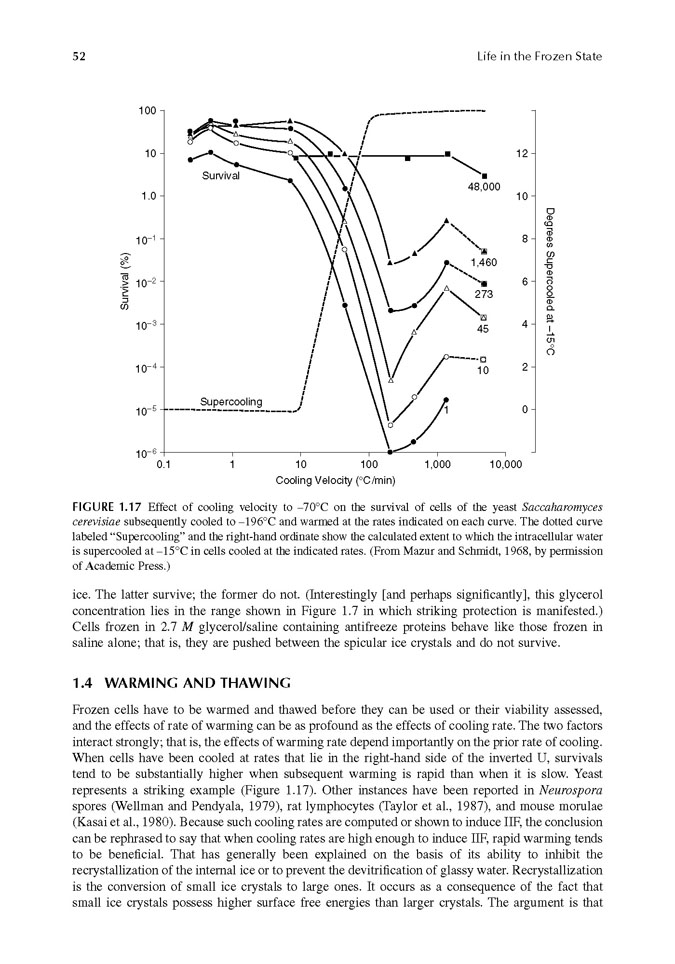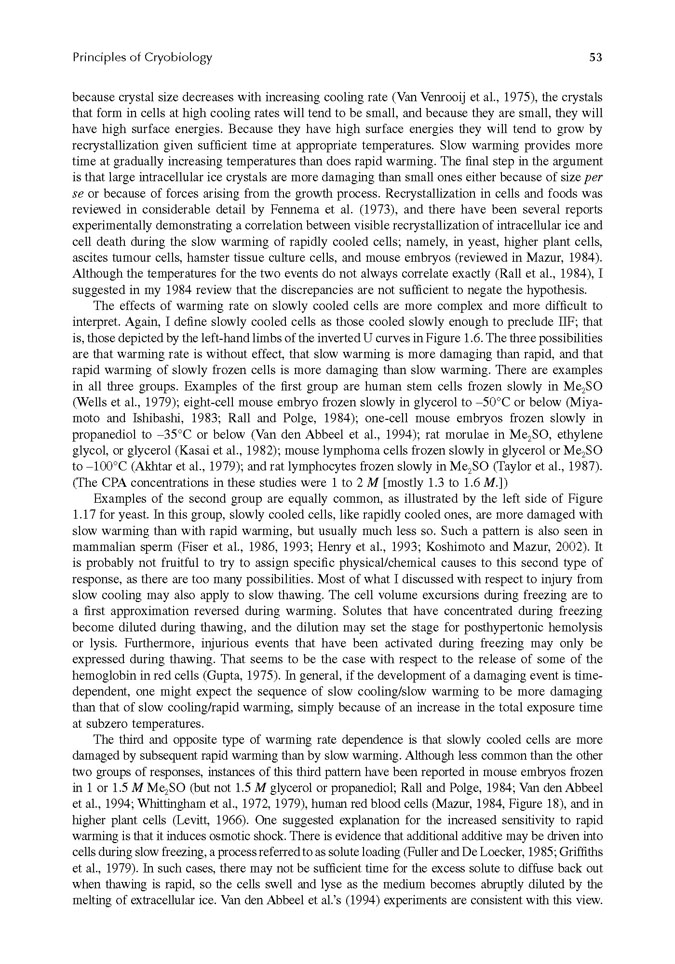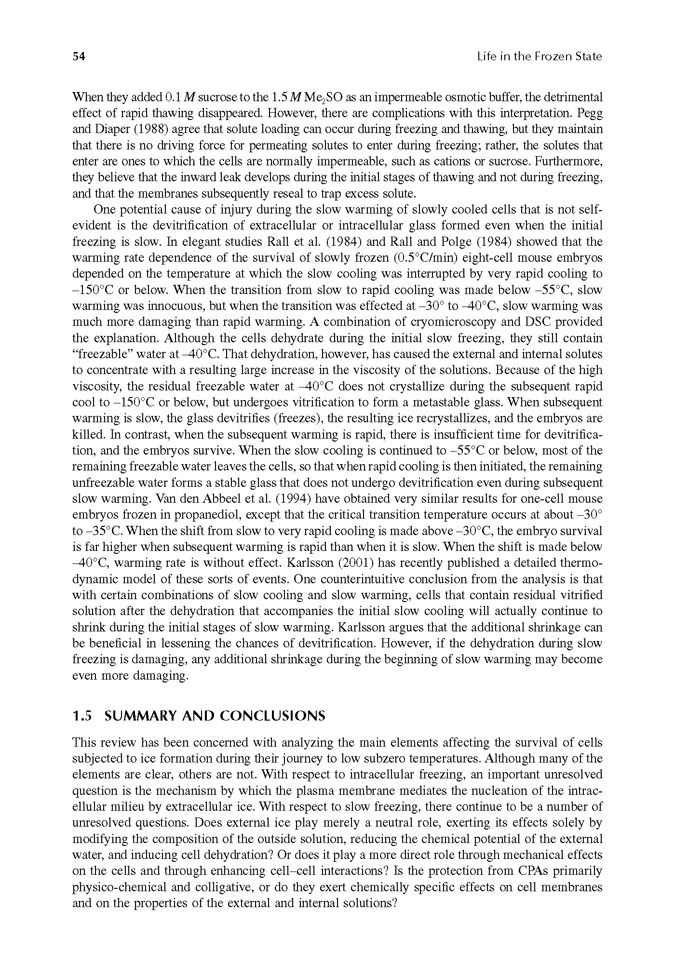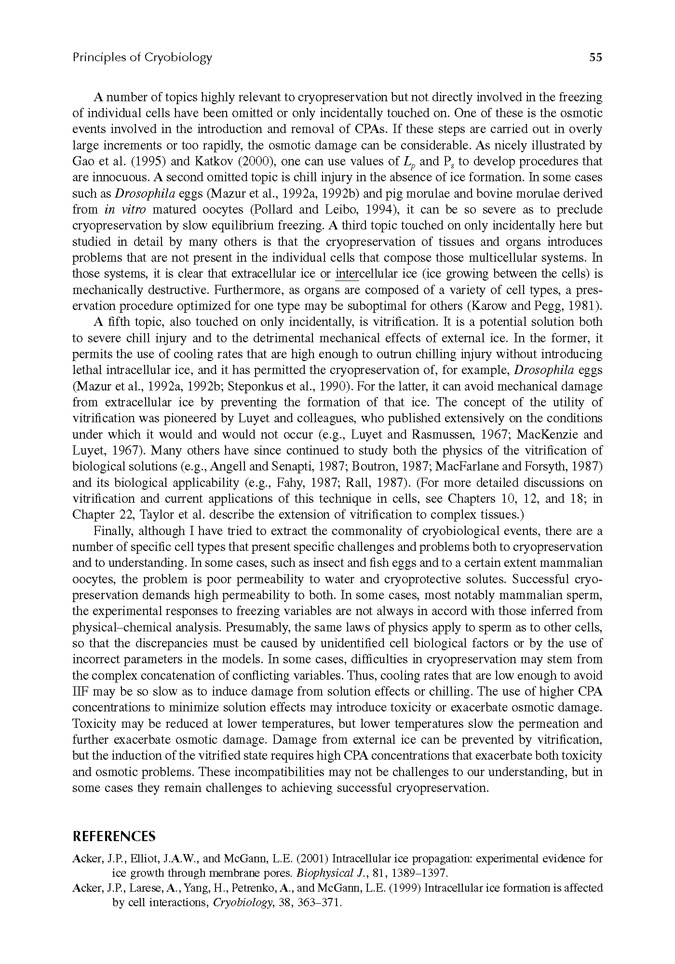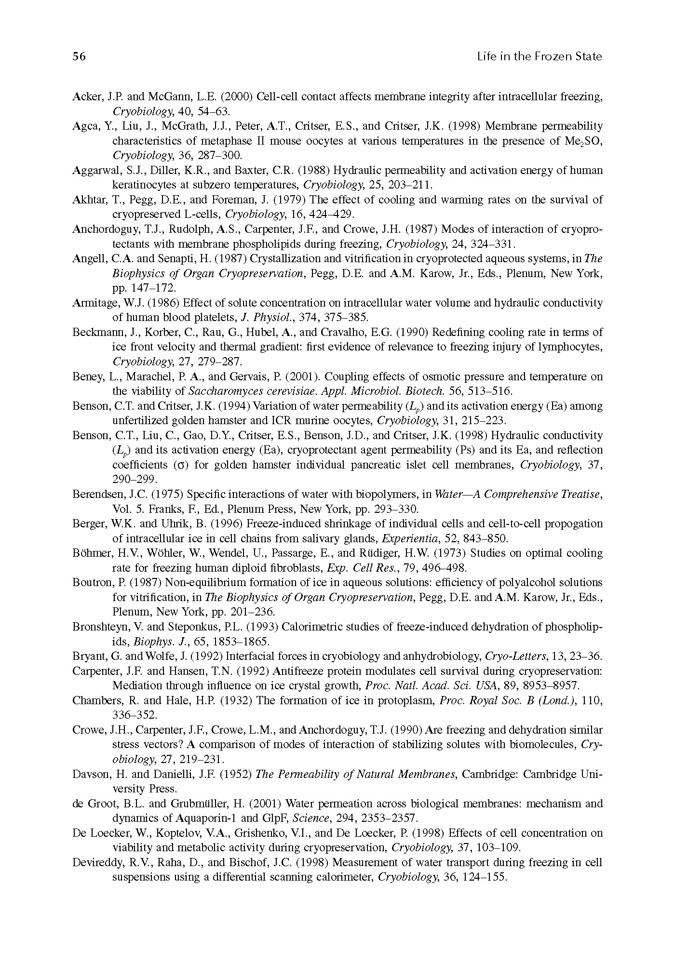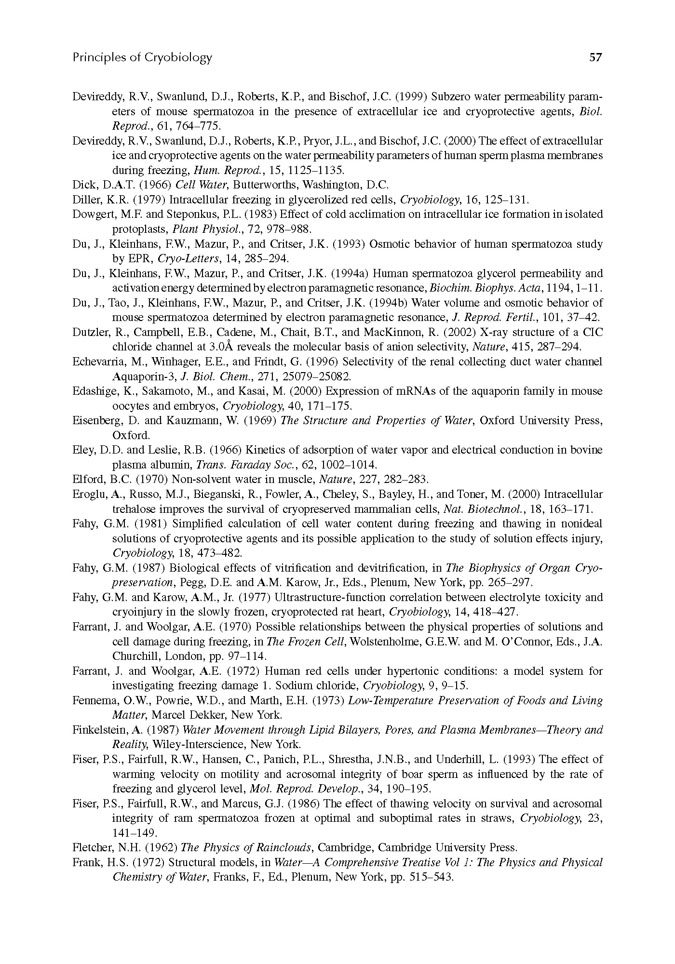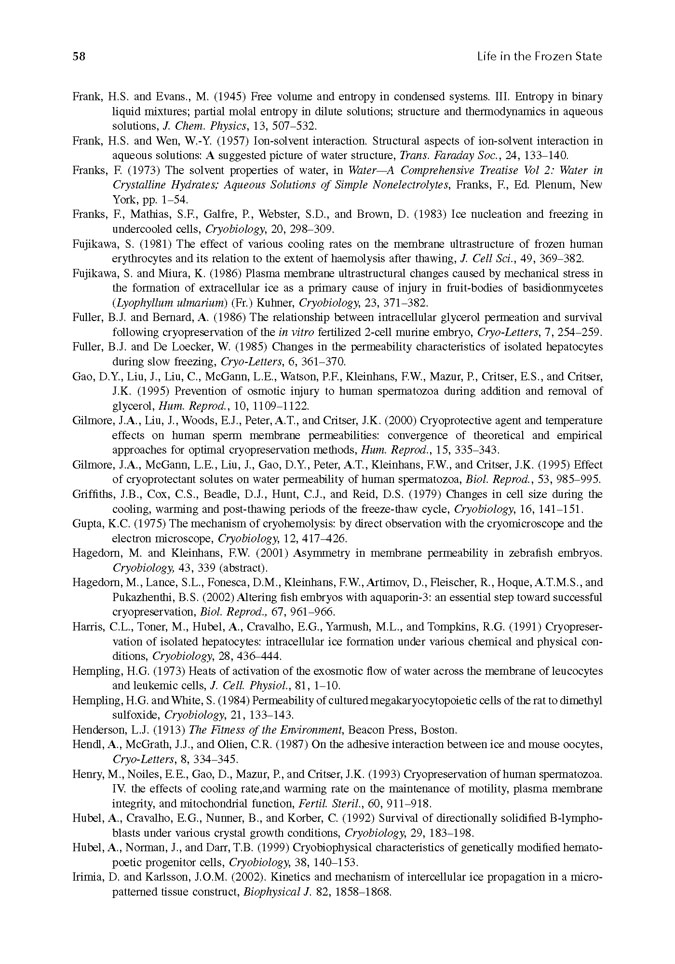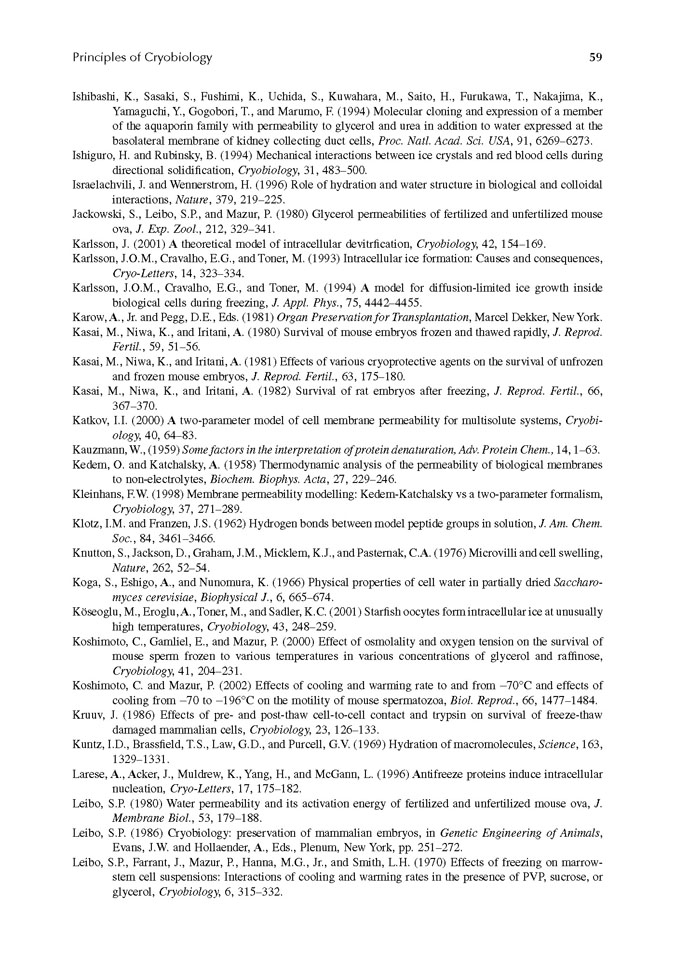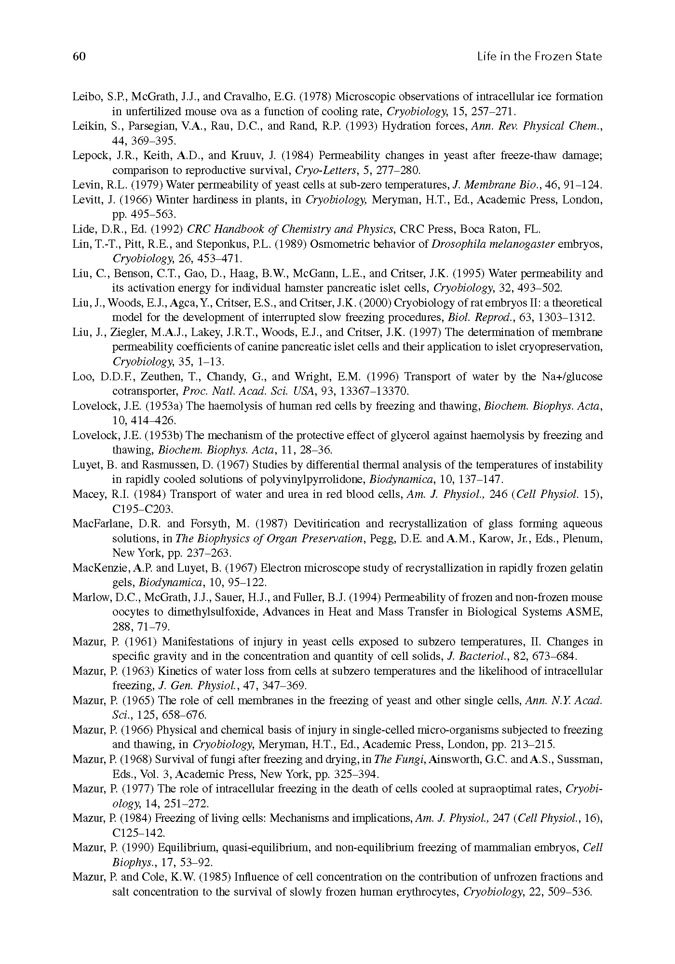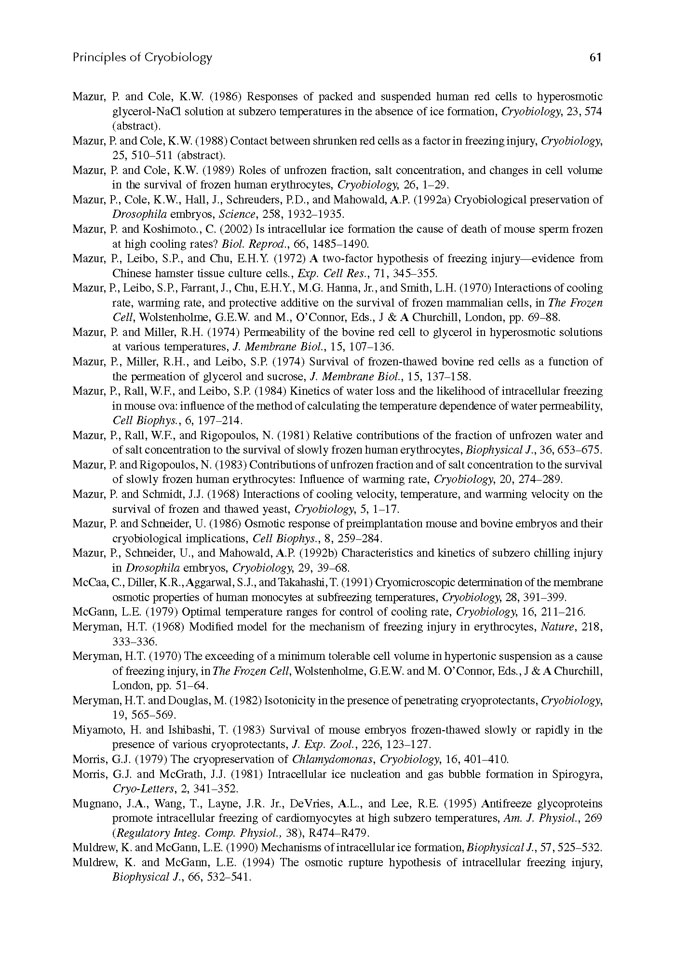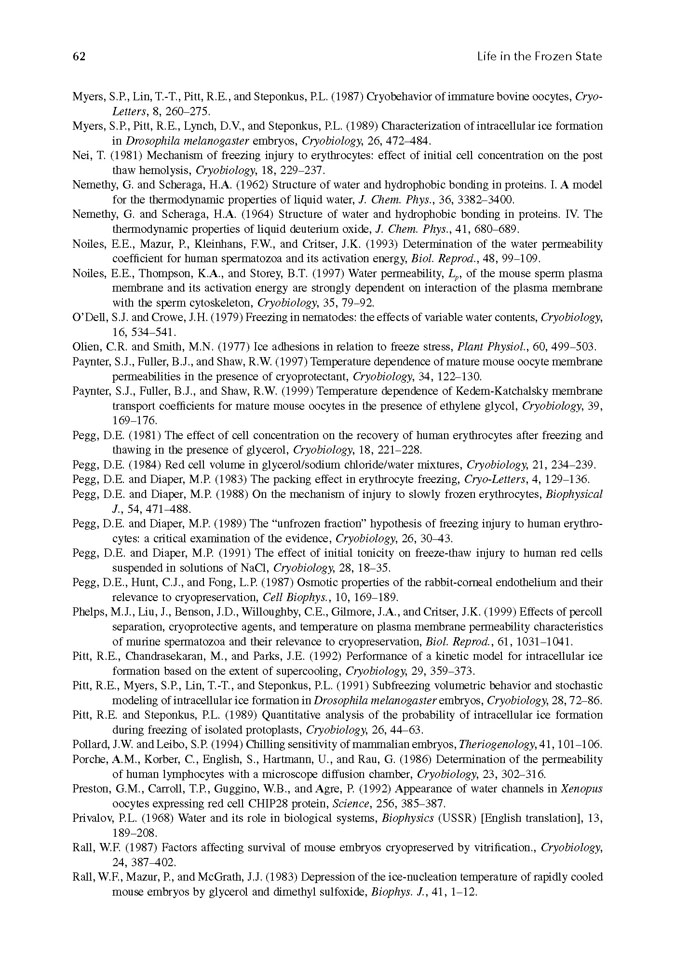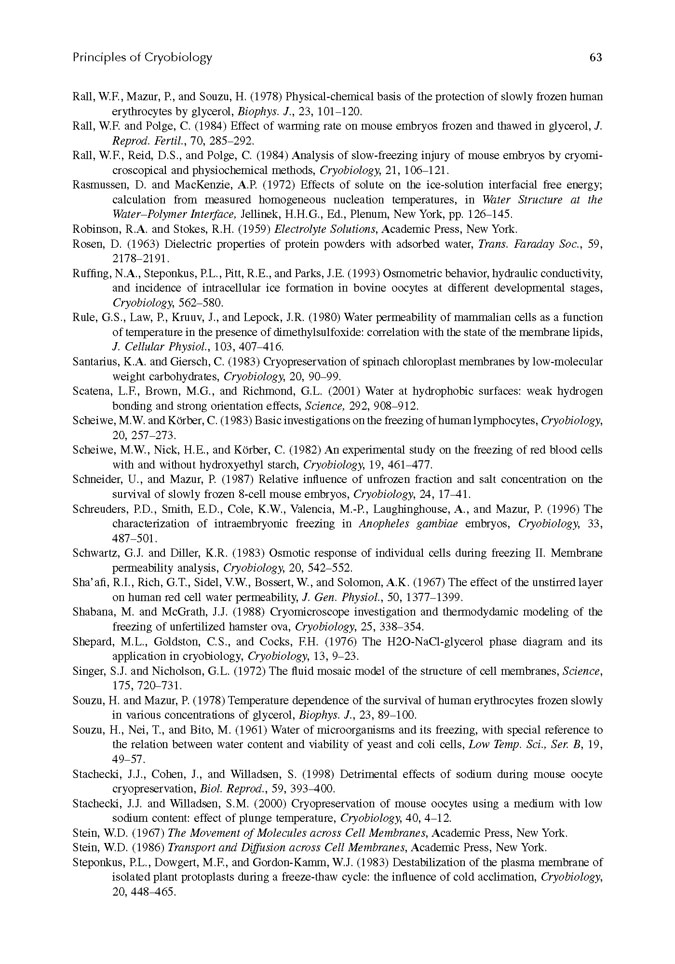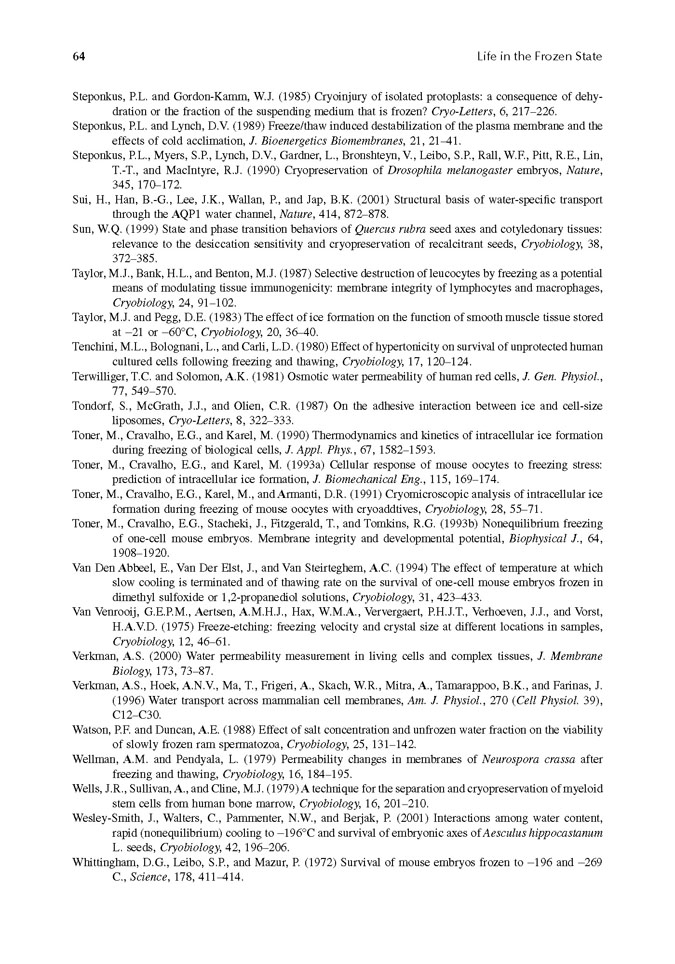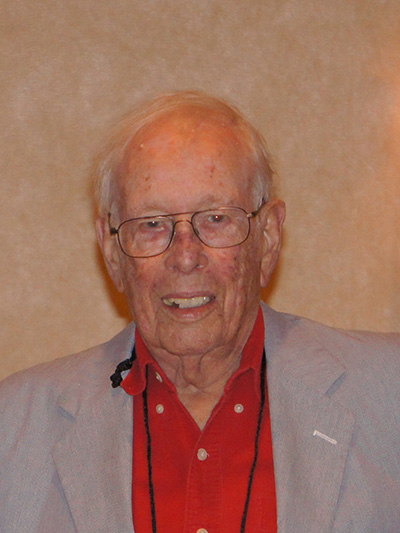
Research Professor
Department of Biochemistry and Cellular and Molecular Biology
Lab: Room 117 Senter Hall. Office: Room 191N Hoskins Library
The University of Tennessee
White Street, Knoxville TN 37996-0840
Phone: (865) 974-9960 (office); 974-9961 (lab). Fax: 974-9941
"This above all: to thine own self be true" Hamlet Act 1, Scene 3
CURRICULUM VITAE
NAME: Peter Mazur
TITLE: Research Professor
ADDRESS:
Laboratory:
Department of Biochemistry and Cellular and Molecular Biology
Fundamental and Applied Cryobiology
Hesler Bldg., Room 104
The University of Tennessee
Knoxville, TN 37996-0840 (865) 974-9960;
FAX (865) 974-9941;
e-mail: pmazur@utk.edu
Home:
125 Westlook Circle
Oak Ridge, Tennessee 37830
(865) 483-9509
MARITAL STATUS:
Married, Drusilla Stevens Mazur 5/53 (deceased 5/82)
One son, Timothy, born 5/55
Married, Sara Jo Bolling Frame 6/84 (deceased 4/03)
EDUCATION:
A.B., Biology, Harvard, 1949 magna cum laude
Ph.D., Biology, Harvard, 1953
MILITARY SERVICE:
1953-57, 1st Lieutenant, U.S. Air Force Research and Development Command
PROFESSIONAL EXPERIENCE:
1957-59 Postdoctoral Research, Department of Biology, Princeton University
1959-1998 Biology Division, Oak Ridge National Laboratory, Oak Ridge, Tennessee
1966-75 Group Leader, Cell Physiology
1967 Visiting Lecturer, Duke University
1970 Long-range Planning Office, Oak Ridge National Laboratory
1972-present Adjunct Professor of Biomedical Sciences, The University of Tennessee
Graduate School of Genome Sciences and Technology
1974-75 Scientific Director, Biophysics and Cell Physiology, Biology Division, Oak Ridge National Laboratory
1976-1998 Group Leader, Fundamental and Applied Cryobiology
1988-1992 Adjunct Professor, Department of Biological Sciences, State University
of New York at Binghamton
1998-present Research Professor, Department of Biochemistry and Cellular and Molecular
Biology, University of Tennessee, Knoxville.
FELLOWSHIPS AND HONORS:
Phi Beta Kappa, 1949
John Harvard Fellow, 1951
Lalor Fellow, 1952
National Science Foundation Postdoctoral Fellow, 1957-59, Princeton University
Fellow, AAAS, 1962
Chairman, Ciba Foundation Symposium "The Frozen Cell," 1969
American Society for Microbiology Foundation Lecturer, 1971-72
Sigma Xi National Lecturer, 1980
Martin Marietta Energy Systems "Author of the Year," 1985
Martin Marietta Corporation Jefferson Cup Award, 1985
Corporate Fellow, Martin Marietta Energy Systems, 1985; Chairman, ORNL Corporate Fellows
Council, 1994 - 1996
Nominated for Japan Prize, 1992
Who's Who in the World, 1987-present
R&D 100 Award, 1993
Distinguished Service Award, American Association of Tissue Banks, 1993
Nominated for National Medal of Technology, 1995
Who’s Who in America, 1996-present
Chancellor’s Associates, The University of Tennessee
Cosmos Club, Washington, DC
Award from The Jackson Laboratory, honoring scientific achievements and contributions to
producing the first mammal born from a frozen embryo, Sept., 1997.
Honorary ScD, Wilson College, May, 1998
Fellow of the Society for Cryobiology, 2005
Papers 11, 33, 34, and 57 named as Citation Classics by the Institute For Scientific Information
SOCIETIES:
American Society for Cell Biology
Society of General Physiologists
Society for Cryobiology - Board of Governors, 1965-74; 1979-1996; 2010-; President, 1973-74
COMMITTEES AND EDITORIAL BOARDS:
AIBS Advisory Committee to Biology and Medicine Branch, Office of Naval Research, 1963-66
AIBS Advisory Committee to Environmental Biology Branch, NASA, 1966-70
Advisory Board, American Type Culture Collection, 1966-70
Harvard University Board of Overseers Visiting Committee to Biology, 1972-77
Member of the Space Science Board of the National Academy of Sciences, 1975-77;
Chairman, Exobiology Committee, 1975-77
Editorial Board, Cryobiology, 1967-present
Member, Advisory Committee on Blood Program Research, American National Red Cross, 1976-
1979.
Member, Germplasm Resources Committee, National Academy of Sciences, 1976-78
Member, National Science Foundation Advisory Committee for Polar Programs,
Subcommittee on Biology and Medicine, 1978-81
Editorial Board, Cryo-Letters, 1979-82
Board of Trustees, Wilson College, Chambersburg, Pennsylvania, 1984-1993
Ad Hoc Committee on Cooperative Mars Exploration and Sample Return, Space Science
Board, National Academy of Sciences, 1987-1988
GRANTS AND CONTRACTS AWARDED (Since 1985)
1. National Institute on Aging, September 1985, 5 yrs.
“Establishment of a bank of frozen embryos from NIH mouse and rat colonies”
2. National Science Foundation, April 1986, 5 yrs.
“Permeability, osmotic, and cryobiological factors pertinent to the preservation by freezing of eggs (embryos) of genetic lines of Drosophila”
3. Veterans Administration, October 1986, 2 yrs.
“Frozen embryo bank, genetic models of alcoholism”
4. National Institute on Alcohol Abuse and Alcoholism, Oregon Health Sciences University, June 1988, 3 yrs.“Cryopreservation of mouse embryos to aid in the genetic selection of lines for ethanol thermal sensitivity”
5. National Institute on Alcohol Abuse and Alcoholism, Oregon Health Sciences University, April 1989, 3 yrs. “Cryopreservation of mouse embryos to aid in the genetic selection of lines for ethanol activity sensitivity”
6. U.S. Department of Agriculture, October 1989, 2 yrs.,“Fundamental cryobiology of bull and ram spermatozoa”
7. National Institute of Child Health and Human Development, Methodist Hospital of Indiana, February 1990, 3 yrs, R01, “Fundamental cryobiology of human spermatozoa”
8. National Institute of Child Health and Human Development, NIH, April 1994, 3 yrs., R01
“Fundamental cryobiology of mouse spermatozoa”
9. National Institute of Allergy and Infectious Diseases, September 1995, 3 yrs., R01
“Cryobiological preservation of Anopheles embryos”
10. State of Tennessee, July, 1998, 1 yr. $27,550, Honey Bee Cryopreservation.
11. National Center for Research Resources, NIH. 3 yrs. $388,210 (R24) subcontract with Dr. John
Critser, Indiana Univ.) “Storage of Mouse Strains Using Sperm Cryopreservation.”
12. National Institute of Allergy and Infectious Diseases, NIH, January 1999, 3 yrs., R01,
“Cryobiological preservation of Anopheles embryos”, $529,229.
13. National Center for Research Resources, NIH, August 2003, 4 yrs., R01, “Aquaporins, Ice
Formation in Cell, and Cryopreservation”, $1,492,675.
14. National Center for Research Resources, NIH, September 30,2007, 3yrs, R01 “Factors Affecting Ice
Formation in Cells”, $1,326,465.
15. National Center for Research Resources, NIH, September 21, 2011, 4yrs, R01 “Factors Affecting Ice
Formation in Cells”, $1,029,153
PUBLICATIONS
A. FULL PAPERS
(No. of full papers: 167. No. of citations: 8,816. h-score: 44)
1. Mazur, P., and William H. Weston 1956 The effects of spray-drying on the viability of fungous spores. J. Bacteriol. 71: 257–266.
2. Mazur, P. 1956 Studies on the effects of subzero temperatures on the viability of spores of Aspergillus flavus. I. The effect of rate of warming. J. Gen. Physiol. 39: 869–888.
3. Mazur, P., Morris A. Rhian, and Bill Mahlandt 1957 Survival of Pasteurella tularensis in sugar solutions after cooling and warming at subzero temperatures. J. Bacteriol. 73: 394–397.
4. Mazur, P., Morris A. Rhian, and Bill G. Mahlandt 1957 Survival of Pasteurella tularensis in gelatin-saline after cooling and warming at subzero temperatures. Arch. Biochem. Biophys. 71: 31–51.
5. Mazur, P. 1960 The effects of subzero temperatures on micro-organisms. In Recent Researches in Freezing and Drying (A. S. Parkes and A. U. Smith, editors). Oxford, Blackwell Scientific Publications, pp. 65–77.
6. Mazur, P. 1960 Physical factors implicated in the death of micro-organisms at subzero temperatures. Annal. N.Y. Acad. Sci. 85: 610–629.
7. Mazur, P. 1961 Physical and temporal factors involved in the death of yeast at subzero temperatures. Biophys. J. 1: 247–264.
8a. Mazur, P. 1961 Manifestations of injury in yeast cells exposed to subzero temperatures. I. Morphological changes in freeze-substituted and in "frozen-thawed" cells. J. Bacteriol. 82: 662–672.
8b. Mazur, P. 1961 Manifestations of injury in yeast cells exposed to subzero temperatures.
II. Changes in specific gravity and in the concentration and quantity of cell solids.
J. Bacteriol. 82: 673–684.
9. Mazur, P. 1963 Studies on rapidly frozen suspensions of yeast cells by differential thermal analysis and conductometry. Biophys. J. 3: 323–353.
10. Mazur, P. 1963 Mechanisms of injury in frozen and frozen-dried cells. In Culture Collections: Perspectives and Problems (S. M. Martin, editor). University of Toronto Press, pp. 59–70.
11. Mazur, P. 1963 Kinetics of water loss from cells at subzero temperatures and the likelihood of intracellular freezing. J. Gen. Physiol. 47: 347–369.
? Named "Citation Classic" by the Institute for Scientific Information.
12. Albright, Joseph F., T. Makinodan, and P. Mazur 1963 Preservation of antibody-producing cells at low temperatures: a method of storage that allows complete recovery of activity. Proc. Soc. Exper. Biol. and Med. 114: 489–493.
13. Mazur, P. 1964 Basic problems in cryobiology. In Advances in Cryogenic Engineering (K. D. Timmerhaus, editor). New York, Plenum Press, Vol. 9, pp. 28–37.
14. Mazur, P. 1965 Causes of injury in frozen and thawed cells. Fed. Proc. 24, No. 2, Part III, S175–S182.
15. Mazur, P. 1965 The role of cell membranes in the freezing of yeast and other single cells. Annal. N.Y. Acad. Sci. 125: 658–676.
16. Mazur, P. 1966 Theoretical and experimental effects of cooling and warming velocity on the survival of frozen and thawed cells. Cryobiology 2: 181–192.
17. Fuchtbauer, W., and P. Mazur 1966 Kinetics of the ultraviolet induced dimerization of thymine in frozen solutions. Photochem. Photobiol. 5: 323–335.
18. Anderson, N. G., J. G. Green, and P. Mazur 1966 Centrifugal freezing. I. A system for rapid freezing of aqueous cell suspensions. National Cancer Institute Monograph 21: 415?430.
19. Mazur, P. 1966 Physical and chemical basis of injury in single-celled micro-organisms subjected to freezing and thawing. In Cryobiology (H. T. Meryman, editor). London, Academic Press, pp. 213–315.
20. Leibo, S. P., and P. Mazur 1966 Effect of osmotic shock and low salt concentration on survival and density of bacteriophages T4B and T4Bo1. Biophys. J. 6: 747–772.
21. Mazur, P. 1967 Physical-chemical basis of injury from intracellular freezing in yeast. In Cellular Injury and Resistance in Freezing Organisms (E. Asahina, editor). Institute of Low Temperature Science, Hokkaido University, Sapporo, Japan, pp. 171–189.
22. Mazur, P. 1967 Factors affecting cell injury in cryosurgical freezing. Bulletin Millard Fillmore Hospital, 14: 123–128.
23. Mazur, P. 1968 Survival of fungi after freezing and desiccation. In The Fungi, (G. C. Ainsworth and A. S. Sussman, editors), Academic Press, N.Y., Vol. III, pp. 325–394.
24. Mazur, P. 1968 Physical-chemical factors underlying cell injury in cryosurgical freezing. In Cryosurgery (R. W. Rand, A. P. Rinfret, and H. V. Leden, editors), C. C. Thomas, Publ., Springfield, Ill., pp. 32–51.
25. Mazur, P., and J. J. Schmidt 1968 Interactions of cooling velocity, temperature, and warming velocity on the survival of frozen and thawed yeast. Cryobiology 5: 1–17.
26. Mazur, P. 1968 Physical and chemical changes during freezing and thawing of cells, with special reference to blood cells. Biblotheca Haematologica No. 29, Part 3, pp. 764–777 (Proc. 11th Cong. Int. Society Blood Transfusion, Sydney, 1966, L. Hollander, editor).
27. Mazur, P. 1969 Freezing injury in plants. Ann. Rev. Plant Physiol. 20: 419–448.
28. Mazur, P., J. Farrant, S. P. Leibo, and E. H. Y. Chu 1969 Survival of hamster tissue-culture cells after freezing and thawing. Interactions between protective solutes and cooling and warming rates. Cryobiology 6: 1–9.
29. Leibo, S. P., and P. Mazur 1969 Freezing of bacteriophage T4: Temperature and rate effects as a function of salt concentration. Cryobiology 38: 558–566.
30. Mazur, P. 1970 Chairman's opening remarks. In The Frozen Cell, Ciba Foundation Symposium, (G. E. W. Wolstenholme and Maeve O'Connor, editors), J. & A. Churchill, London, pp. 1–3.
31. Mazur, P., S. P. Leibo, J. Farrant, E. H. Y. Chu, M. G. Hanna, Jr., and L. H. Smith 1970 Interactions of cooling rate, warming rate and protective additive on the survival of frozen mammalian cells. In The Frozen Cell, Ciba Foundation Symposium, (G. E. W. Wolstenholme and Maeve O'Connor, editors), J. & A. Churchill, London, pp. 69–88.
32. Leibo, S. P., and P. Mazur 1970 Mechanisms of freezing damage in bacteriophage T4. In The Frozen Cell, Ciba Foundation Symposium, (G. E. W. Wolstenholme and Maeve O'Connor, editors), J. & A. Churchill, London, pp. 235–246.
33. Leibo, S. P., J. Farrant, P. Mazur, M. G. Hanna, Jr., and L. H. Smith 1970 Effects of freezing on marrow stem cell suspensions: Interactions of cooling and warming rates in the presence of PVP, sucrose, or glycerol. Cryobiology 6: 315–332.
34. Mazur, P. 1970 Cryobiology: The freezing of biological systems. Science 168: 939–949.
35. Leibo, S. P., and P. Mazur 1971 The role of cooling rates in low-temperature preservation. Cryobiology 8: 447–452.
36. Mazur, P., S. P. Leibo, and E. H. Y. Chu 1972 A two-factor hypothesis of freezing injury -- evidence from Chinese hamster tissue culture cells. Exp. Cell Research 71: 345–355.
37. Bank, H., and P. Mazur 1972 Relation between ultrastructure and viability of frozen-thawed Chinese hamster tissue-culture cells. Exp. Cell Research 71: 441–454.
38. Whittingham, D. G., S. P. Leibo, and P. Mazur 1972 Survival of mouse embryos frozen to –196o and –269oC. Science 178: 411–414.
39. Bank, H., and P. Mazur 1973 Visualization of freezing damage. J. Cell Biol. 57: 729–742.
40. Whittingham, D. G., S. P. Leibo, and P. Mazur 1973 Maternal influences on mouse embryos and preservation of mutant strains by freezing. Science 181: 288.
41. Mazur, P., and S. P. Leibo 1973 Response of mammalian cells to freezing and thawing. In Cryoconservation des Cellules Normales et neoplasiques. Institut National de la Sante et de la Recherche Medicale, Villejuif, France, pp. 17–25.
42. Leibo, S. P., and P. Mazur 1973 Factors affecting the survival of tissue- culture cells and erythrocytes subjected to extracellular freezing. In Progress in Refrigeration Science and Technology, Vol. 3, pp. 939–943. Avi Publishing Co., Westport, Conn. Proceedings of the XIII International Congress of Refrigeration.
43. Mazur, P., S. P. Leibo, and R. H. Miller 1974 Permeability of the bovine red cell to glycerol in hyperosmotic solutions at various temperatures. J. Membrane Biology15: 107–136.
44. Mazur, P., R. H. Miller, and S. P. Leibo 1974 Survival of frozen-thawed bovine red cells as a function of the permeation of glycerol and sucrose. J. Membrane Biology 15: 137–158.
45. Leibo, S. P., P. Mazur, and S. C. Jackowski 1974 Factors affecting survival of mouse embryos during freezing and thawing. Exp. Cell Research 89: 79–88.
46. Towill, L. E., and P. Mazur 1975 Studies on the reduction of 2,3,5-triphenyltetrazolium chloride as a viability assay for plant tissue cultures. Can. J. Bot. 53: 1097–1102.
47. Mazur, P. 1975 Fundamental aspects of freezing injury in living cells. In Proceedings, lst International Congress of the International Association of Microbiological Societies, Tokyo, Japan, September 1–7, 1974, Vol. 5, Science Council of Japan, 1975, pp. 577–586.
48. Mazur, P. 1976 Freezing and low temperature storage of living cells. In Proceedings of the Workshop on Basic Aspects of Freeze Preservation of Mouse Strains. Jackson Laboratory, Bar Harbor, Maine, September 16–18, 1974, Otto Muhlbock, Editor, Gustav Fischer Verlag, Publ., Stuttgart, pp. 1–12.
49. Towill, L. E., and P. Mazur 1976 Osmotic shrinkage as a factor in freezing injury in plant tissue cultures. Plant Physiol. 57: 290–296.
50. Miller, R. H., and P. Mazur 1976 Survival of frozen-thawed human red cells as a function of cooling and warming velocities. Cryobiology 13: 404–414.
51. Mazur, P., and R. H. Miller 1976 Permeability of the human erythrocyte to glycerol in 1 and 2 M solutions at 0o or 20oC. Cryobiology 13: 507–522.
52. Mazur, P., and R. H. Miller 1976 Survival of frozen-thawed human red cells as a function of the permeation of glycerol and sucrose. Cryobiology 13: 523–536.
53. Mazur, P., J. A. Kemp, and R. H. Miller 1976 Survival of fetal rat pancreases frozen to –78 and –196oC. Proc. Nat. Acad. Sci. U.S. 73: 4105–4109.
54. Souzu, H., and P. Mazur 1976 Correlation between the survival of slowly frozen human red cells and the composition of the unfrozen portion of the extracellular medium at various subzero temperatures. I. Hemolysis by freezing in 2 M glycerol. In Low Temperature Science, Series B, Institute of Low Temperature Science, Hokkaido University, 34: 19–25 (in Japanese).
55. Mazur, P. 1977 Mechanisms of injury and protection in cells and tissues at low temperatures. In Les Colloques de l'Institut National de la Sante et la recherche Medicale, Cryoimmunologie, INSERM, June 17–19, 1976 (Simatos, D., Strong, D. M., Turc, J. M., editors), Vol. 62, pp. 37–60.
56. Kemp, J. A., P. Mazur, Y. Mullen, R. H. Miller, W. Clark, and J. Brown 1977 Reversal of experimental diabetes by fetal rat pancreas. I. Survival and function of fetal rat pancreas frozen to -196?C. Transplantation Proceedings 9(1): 325–328.
?57. Mazur, P. 1977 The role of intracellular freezing in the death of cells cooled at supraoptimal rates. Proceedings of Symposium on Cryoinjury, 13th Annual Meeting, Society for Cryobiology, August 1–5, 1976 Cryobiology 14: 251–272.
58. Brown, J., W. Clark, I. G. Molnar, J. Kemp, P. Mazur, and Y. S. Mullen 1977 Functional capacity and cryopreservation of fetal rat pancreas in streptozotocin diabetes. Proceedings 9th Congress, International Diabetes Federation, New Delhi, India, October 31–November 5, 1976. Excerpta Medica, Series 400, pp. 167–175.
59. Mazur, P. 1977 Slow-freezing injury in mammalian cells. In The Freezing of Mammalian Embryos. Ciba Foundation Symposium No. 52 (new series), (Katherine Elliott and Julie Whelan, editors), Elsevier, Amsterdam, pp. 19–42
60. Leef, J. L., and P. Mazur 1978 The physiological response of Neurospora conidia to freezing in the dehydrated, hydrated, or germinated state. Appl. Environ. Microbiol. 35: 72–83.
61. Leibo, S. P., and P. Mazur 1978 Methods for the preservation of mammalian embryos by freezing. In Methods in Mammalian Reproduction. (J. C. Daniel, Jr., editor), Academic Press, N.Y., pp. 179–201.
62. Souzu, H., and P. Mazur 1978 Temperature dependence of the survival of human erythrocytes frozen slowly in various concentrations of glycerol. Biophysical Journal 23: 89?100.
63. Rall, W. F., P. Mazur, and H. Souzu 1978 Physical-chemical basis of the protection of slowly frozen human erythrocytes by glycerol. Biophysical Journal 23: 101–120.
64. Mazur, P., E. S. Barghoorn, H. O. Halvorson, T. H. Jukes, I. R. Kaplan, and L. Margulis 1978 Biological implications of the Viking mission to Mars. Space Science Reviews 22: 3?34.
65. Mazur, P. 1979 Preservation of mammalian germ plasm by freezing. In Animal Models for Research on Contraception and Fertility. (N. J. Alexander, ed.), Proceedings of a symposium held May 8–10, 1978, Washington, D.C., under the sponsorship of the National Research Council, Harper Row, publ., pp. 528–539.
66. Margulis, L., P. Mazur, E. S. Baghoorn, H. O. Halvorson, T. H. Jukes, and I. R. Kaplan 1979 The Viking Mission: Implications for Life on Mars. J. Mol. Evolution14: 223–232.
67. Mazur, P. 1980 Limits to life at low temperatures and at reduced water contents and water activities. Proceedings of the 4th College Park Colloquium on Chemical Evolution, October 18?20, 1978, Univ. Maryland. Origins of Life 10: 137–159, and in Limits of Life (Cyril Ponnamperuma and Lynn Margulis, eds.), D. Reidel, publ., Dodrecht, pp. 1–23.
68. Frim, J., and P. Mazur 1980 Approaches to the preservation of human granulocytes by freezing. In symposium on Storage and preservation of Granulocytes, Society for Cryobiology Annual Meeting, September 30–October 4, 1979. Cryobiology 17: 282–286.
69. Jackowski, S., S. P. Leibo, and P. Mazur 1980 Glycerol permeabilities of fertilized and unfertilized mouse ova. J. Exp. Zool. 212: 329–341.
70. Mazur, P. 1980 Fundamental aspects of the freezing of cells, with emphasis on mammalian ova and embryos. In Proceedings of Plenary Sessions, 9th International Congress on Animal Reproduction and Artificial Insemination, Madrid, Spain, June 16–20, 1980, Vol. 1, pp. 99–114.
71. Mazur, P., and R. V. Rajotte 1981 Permeability of the 17-day fetal rat pancreas to glycerol and dimethyl sulfoxide. Cryobiology 18: 1–16.
72. Rajotte, R. V., and P. Mazur 1981 Survival of frozen-thawed fetal rat pancreases as a function of the permeation of dimethyl sulfoxide and glycerol, warming rate, and fetal age. Cryobiology 18: 17–31.
73. Mazur, P. 1981 Fundamental cryobiology and the preservation of organs by freezing. In Organ Preservation for Transplantation. (A. Karow and D. Pegg, eds.), Marcel Dekker, Inc., p. 143–175.
74. Mazur, P., W. F. Rall, and N. Rigopoulos 1981 Relative contributions of the fraction of unfrozen water and of salt concentration to the survival of slowly frozen human erythrocytes. Biophysical J. 36: 653–675.
75. Rall, W. F., P. Mazur, and J. J. McGrath 1983 Depression of the ice-nucleation temperature of rapidly cooled mouse embryos by glycerol and dimethyl sulfoxide. Biophysical J. 41: 1?12.
76. Mazur, P., and N. Rigopoulos 1983 Contributions of unfrozen fraction and of salt concentration to the survival of slowly frozen human erythrocytes: Influence of warming rate. Cryobiology 20: 274–289.
77. Frim, J., and P. Mazur 1983 Interactions of cooling rate, warming rate, glycerol concentration, and dilution procedure on the viability of frozen-thawed human granulocytes. Cryobiology 20: 657–676.
78. Schneider, U., and P. Mazur 1983 Osmotic consequences of cryoprotectant permeability and its relation to the survival of frozen-thawed embryos. Theriogenology 21: 68–79.
79. Mazur, P., and R. V. Rajotte 1984 The preservation by freezing to -196?C of Islets of Langerhans in intact fetal pancreata in the isolated state, and in pancreatic fragments. In Methods in Diabetes Research, Vol. 1, (J. Larner and S. L. Pohl, eds.), J. Wiley, N.Y., pp. 235–251.
80. Mazur, P. 1984 The freezing of living cells: Mechanisms and implications. Amer. J. Physiol. 247(Cell Physiol. 16): C125–C142.
81. Mazur, P. 1984 Book review of Effects of Low Temperature on Biological Membranes, (G. J. Morris and A. Clarke, eds.), Academic Press. Cryobiology 21: 578–580.
82. Armitage, W. J., and P. Mazur 1984 Osmotic tolerance of human granulocytes. Amer. J. Physiology 247(Cell Physiol. 16): C373–C381.
83. Armitage, W. J., and P. Mazur 1984 Toxic and osmotic effects of glycerol on human granulocytes. Amer. J. Physiology 247(Cell Physiol. 16): C382–C389.
84. Mazur, P., W. F. Rall, and S. P. Leibo 1984 Kinetics of water loss and the likelihood of intracellular freezing in mouse ova: Influence of the method of calculating the temperature dependence of water permeability. Cell Biophysics 6: 197–214.
85. Mazur, P., and K. W. Cole 1985 Influence of cell concentration on the contribution of unfrozen fraction and salt concentration to the survival of slowly frozen human erythrocytes. Cryobiology 22: 505–536.
86. Mazur, P. 1985 Basic concepts in freezing cells, in Proceedings First International Conference on Deep Freezing of Boar Semen, Uppsala, Sweden, August 25–27, 1985, (L. A. Johnson and K. Larsson, eds.), Publ. by Swedish University of Agricultural Sciences and the United States Department of Agriculture, pp. 91–112.
87. Armitage, W. J., and P. Mazur 1986 Effect of plasma on the recovery and survival of human granulocytes incubated at 37?C after exposure to phosphate buffered saline or glycerol. Cryobiology 23: 194–197.
88. Schneider, U., and P. Mazur 1986 Implications and applications of the long-term preservation of embryos by freezing. In Current Therapy in Theriogenology II, (D. Morrow, ed.), W. B. Saunders, Philadelphia, pp. 81–83.
89. Mazur, P., and U. Schneider 1986 Osmotic response of preimplantation mouse and bovine embryos and their cryobiological implications. Cell Biophys. 8: 259–285.
90. Schneider, U., and P. Mazur 1987 Relative influence of unfrozen fraction and salt concentration on the survival of slowly frozen 8-cell mouse embryos. Cryobiology 24: 17–41.
91. Mazur, P. 1988 Stopping biological time -- The freezing of living cells. Proceedings of Fifth World Congress on In Vitro Fertilization and other Assisted Reproduction (H.W. Jones, Jr. and C. Schrader, eds.). Annals New York Acad. Sci.541:514–531.
92. Mazur, P., and K. W. Cole 1989 Roles of unfrozen fraction, salt concentration, and changes cell volume in the survival of frozen human erythrocytes. Cryobiology26:1–29.
93. Mazur, P. 1989 Frozen Neanderthals. Nature 342: 23.
94. Mazur, P. 1990 Equilibrium, quasi-equilibrium, and non equilibrium freezing of mammalian embryos. Cell Biophys. 17: 53–92.
95. Du, J., F. W. Kleinhans, V. J. Spitzer, L. Horstman, P. Mazur, and J. K. Critser 1991 ESR-determined osmotic behavior of bull spermatozoa. In Boar Semen Preservation II, Supplement 1 to Reproduction in Domestic Animals (L. A. Johnson and D. Roth, eds.), Paul Parey, Publ., Berlin, pp. 105–108.
96. Noiles, E. E., N. A. Ruffing, F. W. Kleinhans, L. A. Mark, L. Horstman, P. F. Watson, P. Mazur, and J. K. Critser 1991 Critical tonicity determination of sperm using fluorescent staining and flow cytometry. In Boar Semen Preservation II, Supplement 1 to Reproduction in Domestic Animals, (L. A. Johnson and D. Roth, eds.), Paul Parey, Publ., Berlin, pp. 359?364.
97. Mazur, P., U. Schneider, and A. P. Mahowald 1992 Characteristics and kinetics of subzero chilling injury in Drosophila embryos. Cryobiology 29: 39–68.
98. Mazur, P., K. W. Cole, and A. P. Mahowald 1992 Critical factors affecting the permeabilization of Drosophila embryos by alkanes. Cryobiology 29: 210–239.
99. Watson, P. F., J. F. Critser, and P. Mazur 1992 Sperm preservation: Fundamental cryobiology and practical implications. In Infertility, (A.A. Templeton and J.O. Drife, eds.), Springer-Verlag, publ., pp. 101–114.
100. Gao, D. Y., P. Mazur, F. W. Kleinhans, P. F. Watson, E. E. Noiles, and J. K. Critser 1992 Glycerol permeability of human spermatozoa and its activation energy. Cryobiology 29: 657?667.
101. Mazur, P., K. W. Cole, J. Hall, P. D. Schreuders, and A. P. Mahowald 1992 Cryobiological preservation of Drosophila embryos. Science 258: 1932–1935.
102. Mazur, P. 1992 Frozen living cells, tissues, and organs. In Fundamentals of Medical Cell Biology, Vol 6, Neurobiology, Thermobiology, and Cytobiology (E.E. Bittar, ed.), JAI Press, Greenwich, CT, pp. 265–290.
103. Watson, P.F., E.E. Noiles, M.R. Curry, P. Mazur, J.K. Critser, and R.H. Hammerstedt 1992 Response of spermatozoa to hypotonic stress reflects cryopreservation success. Proc. 12th Int. Congr. of Animal Reproduction, 3: 1502–1504.
104. Noiles, E.E., P. Mazur, P.F. Watson, F.W. Kleinhans, and J.K. Critser 1993 Determination of water permeability coefficient for human spermatozoa and its activation energy. Biology of Reproduction 48: 99–109.
105. Mazur, P., K.W. Cole, P.D. Schreuders, and A.P. Mahowald 1993 Contributions of cooling and warming rate and developmental stage to the survival of Drosophila embryos cooled to -205?C. Cryobiology 30: 45–73.
106. Cole, K.W., P.D. Schreuders, A.P. Mahowald, and P. Mazur 1993 Procedure for the permeabilization and cryobiological preservation of Drosophila embryos. Oak Ridge National Laboratory Technical Report 12394, 5/6/93.
107. Gao, D.Y., E. Ashworth, P.F. Watson, P. Mazur, and J.K. Critser 1993 Hyperosmotic tolerance of human spermatozoa: Separate effects of glycerol, sodium chloride and sucrose on spermolysis. Biology Reproduction 49: 112–123.
108. Crabbe, J.C., U. Schneider, J.W. Hall, and P. Mazur 1993 Cryopreservation as a tool for the study of selectively bred lines in rodent behavioral genetics. Behavior Genetics 21: 307–312.
109. Du, J., F.W. Kleinhans, P. Mazur, and J.K. Critser 1993 Osmotic behavior of human spermatozoa studied by EPR. Cryo-Letters 14: 285–294.
110. Henry, M. E.E. Noiles, D. Gao, P. Mazur, and J.K. Critser 1993 Cryopreservation of human spermatozoa: The effect of cooling rate and warming rate on the maintenance of motility, plasma membrane integrity, and mitochondrial integrity. Fertil. Steril. 60: 911–918.
111. Du, J., J. Tao, F.W. Kleinhans, P. Mazur, and J.K. Critser 1994 Water volume and osmotic behavior of mouse spermatozoa determined by electron paramagnetic resonance. J. Reprod. Fertil. 101: 37–42.
112. Schreuders, P.D. and P. Mazur 1994 Vitrification-based cryopreservation of Drosophila embryos, Advances in Cryogenic Engineering, 39: 2031–2038.
113. Du, J., F.W. Kleinhans, P. Mazur, and J.K. Critser 1994 Human spermatozoa glycerol permeability and activation energy determined by EPR. Biochim. Biophys. Acta 1194: 1–11.
114. Gao, D. Y., J. Liu, L. E. McGann, P. F. Watson, F. W. Kleinhaus, P. Mazur, E. S. Critser, and J. K. Critser 1995 Prevention of osmotic injury to human spermatozoa during addition and removal of glycerol. Human Reproduction, 10: 1109–1122.
115. Tao, J., J. Du, F. W. Kleinhans, E. S. Critser, P. Mazur, and J. K. Critser 1995 The effect of collection temperature, cooling rate, and warming rate on chilling injury and cryopreservation of mouse spermatozoa. J. Reprod. Fertility, 104: 231–236.
116. Mazur, P. 1996 Principles of medical cryobiology: The freezing of living cells, tissues, and organs. In Principles of Medical Biology (E.E. Bittar and N. Bittar, eds.). Vol. 4, Cell Chemistry and Physiology; Part IV, pp. 355–384, J.A.I. Press.
117. Valencia, M. P., L. H. Miller, and P. Mazur 1996 Permeability of intact and dechorionated embryos of the Anopheles mosquito to water vapor and liquid water: A Comparison with Drosophila. Cryobiology 33: 142–148.
118. Valencia, M. P., L. H. Miller, and P. Mazur 1996 Permeabilization of eggs of the malaria mosquito Anopheles gambiae. Cryobiology 33: 149–162.
119. Schreuders, P. D., J. N. Kassis, K. W. Cole, U. Schneider, A. P. Mahowald, and P. Mazur 1996 The kinetics of Drosophila embryo drying as a function of the steps in permeabilization: Experimental. J. Insect Physiol. 42: 501–516.
120. Schreuders, P. D., J. N. Kassis, and P. Mazur 1996 The kinetics of Drosophilaembryo drying as a function of the steps in permabilization: Theoretical. J. Insect Physiol, 42: 603–615.
121. Willoughby, C. E., P. Mazur, A. T. Peter, and J. K. Critser 1996 Osmotic tolerance limits and properties of mouse spermatozoa. Biol. Reproduction 55: 715-727.
122. Schreuders, P. D., E. D. Smith, K. W. Cole, M-.P. Valaencia, A. Laughinghouse, and P. Mazur 1996. The characterization of intraembryonic freezing in Anopheles gambiae embryos. Cryobiology 33: 487-501.
123. Gao, D. Y., P. Mazur, and J. K. Critser 1997. Fundamental cryobiology of mammalian spermatozoa. In “Tissue Banking in Reproductive Biology,” A. M. Karow, Jr. and J. K. Critser, eds., San Diego: Academic Press, Life Sciences Division, pp.263-328.
124. Mazur, P. 1997. Biophysical and biological factors determining the ability to achieve long-term cryobiological preservation. Proc. BESTcapsule 2001 Workshop, Osaka, Japan, Nov. 3-5. (T. Shibatu and T. Etoh, eds).
125. Katkov, I. I. and P. Mazur. 1998. Influence of centrifugation regimes on motility, yield, and cell associations of mouse spermatozoa. J. Androl. 19: 232-241.
126. Katkov, I. I., N. Katkova, J. K. Critser, and P. Mazur. 1998 Mouse spermatozoa in high concentrations of glycerol: Chemical toxicity vs osmotic shock at normal and reduced oxygen concentrations.Cryobiology 37: 325-338.
127. Katkov, I. I. and P. Mazur. 1999.Factors affecting yield and survival of cells when suspensions are subject to centrifugation. I. Influence of centrifugal acceleration, time of centrifugation, and length of suspension column in homogeneous centrifugal fields. Cell Biochem. Biophys. 31:231-245.
128. Mazur, P., I.I. Katkov, N. Katkova, and J.K. Critser. 2000. The enhancement of the ability of mouse sperm to survive freezing and thawing by the use of high concentrations of glycerol and the presence of an E. coli membrane fraction (Oixyrase) to lower the oxygen concentration. Cryobiology 40:187-209.
129. Koshimoto, C., E. Gamliel, and P. Mazur. 2000. Effect of osmolality and oxygen tension on the survival of mouse sperm frozen to various temperatures in various concentrations of glycerol and raffinose. Cryobiology 41: 204-231.
130. Koshimoto, C., and P. Mazur. 2001 Several contributors affecting mouse sperm cryopreservation. In “Reproductive Biotechnology: Reproductive biotechnology update and its related physiology” ( H. Miyamoto and N. Manabe, eds), Hokutu Shobo, Kyoto, pp 319-325.
131. Koshimoto, C. and P. Mazur. 2002. Effects of cooling and warming rate to and from –70oC, and effects of further cooling from –70 to –196 oC on the motility of mouse spermatozoa. Biol. Reprod. 66: 1477-1484
132. Mazur, P. and C. Koshimoto. 2002. Is intracellular ice formation the cause of death of mouse sperm frozen at high cooling rates? Biol. Reprod. 66: 1485-1490.
133. Koshimoto, C. and P. Mazur. 2002. Effects of warming rate, temperature, and antifreeze proteins on the survival of mouse spermatozoa frozen at an optimum rate. Cryobiology 45: 49-59.
134. Koshimoto, C. and P. Mazur. 2002. The effect of the osmolality of sugar-containing media , the type of sugar, and the mass and molar concentration of sugar on the survival of frozen-thawed mouse sperm. Cryobiology 45: 80-90.
135. Liu, X.-H. and P. Mazur. 2003. Effect of sugars on the kinetics of drying and on the survival of partially dehydrated larvae on Anopheles mosquitos. J. Insect Physiology 49: 685-695.
136. Liu, X-H., H. Pan, and P. Mazur. 2003. Permeation and toxicity of ethylene glycol and methanol in larvae of Anopheles gambiae. J. Exp. Biology 206: 2221-2228
137. Mazur, P. 2004. Principles of cryobiology. In “Life in the Frozen State” (B.J. Fuller, N.Lane, and E. Benson, Eds), CRC Press, Boca Raton, pp. 3-65.
138. Hagedorn, M., A. Peterson, P. Mazur, and F.W. Kleinhans. 2004. High ice nucleation temperature of zebrafish embryos: slow freezing is not an option. Cryobiology 49: 181-189.
139. Mazur, P., S. Seki, I.L. Pinn, F.W. Kleinhans, and K. Edashige. 2005. Extra- and intracellular ice formation in mouse oocytes. Cryobiology 51: 29-53.
140. Mazur, P., I.L.Pinn, S. Seki,. F.W. Kleinhans, K. Edashige. 2005. Effects of hold time after extracellular ice formation on intracellular freezing of mouse oocytes. Cryobiology 51: 235-239.
141. Hagedorn, M., R. Pan, E.F. Cox, L. Hillingsworth, D. Krupp, T.D. Lewis, J. Leong, P. Mazur, W. Rall, D.R. MacFarlane, G. Fahy, and F.W. Kleinhans. 2005. Coral larvae membrane physiology and cryobiology. Cryobiology 52: 33-47..
142. Kleinhans, F.W., J.F. Guenther, D.M. Roberts, and P. Mazur. 2006. Analysis of ice nucleation in Xenopus oocytes by differential scanning calorimetry. Cryobiology 52: 128-138.
143. Guenther, J.F., S. Seki, F.W. Kleinhans, K. Edashige, D.M. Roberts, and P, Mazur. 2006 Extra- and intracellular ice formation in Stage I and II Xenopus laevis oocytes.Cryobiology 52: 401-416.
Correction: Cryobiology 53 (2006) 294.
144. Collins, A.M. and P. Mazur. 2006. Chill sensitivity of Honey Bee, Apis mellifera, embryos. Cryobiology 53: 22-27.
145. Kleinhans, F.W. and P. Mazur. 2007. Comparison of actual vs synthesized ternary phase diagrams for solutes of cryobiological interest. Cryobiology 54: 212-222.
146. Mazur, P., I.L. Pinn, and F.W. Kleinhans. 2007 The temperature of intracellular ice formation in mouse oocytes vs. the unfrozen fraction at that temperature. Cryobiology 54: 223-233
147. Mazur, P. I.L. Pinn, and F.W. Kleinhans. 2007. Intracellular ice formation in mouse oocytes subjected to interrupted rapid cooling. Cryobiology 55: 158-166.
148. Mazur, P., S.P. Leibo, G.E. Seidel. 2008 Cryopreservation of the germplasm of animals used in biological and medical research: Importance, impact, status, and future directions. Biology of Reproduction 78: 2-12.
149. Mazur, P. and F.W. Kleinhans 2008. Relationship between intracellular ice formation in oocytes of the mouse and Xenopus and the physical state of the external medium–a revisit. Cryobiology 56: 22-27.
150. Seki, S. and P. Mazur. 2008. Kinetics and activation energy of recrystallization of intracellular ice in mouse oocytes subjected to interrupted rapid cooling. Cryobiology 56: 171-180.
151. Seki, S. and P. Mazur. 2008. Effect of warming rate on the survival of vitrified mouse oocytes and on the recrystallization of intracellular ice. Biology of Reproduction. 79: 727-737.
.
152. Kleinhans, F.W. and P. Mazur. 2009. The determination of the water permeability (Lp) of mouse oocytes at –25°C and its activation energy at subzero temperatures. Cryobiology 58: 215-224.
153. Seki, S., F.W. Kleinhans, and P. Mazur 2009. Intracellular ice formation in yeast cells vs. cooling rate: Predictions from modeling vs, experimental observations by differential scanning calorimetry. Cryobiology 58: 157-165.
154. Seki, S. and P. Mazur. 2009 The dominance of warming rate over cooling rate in the survival of mouse oocytes subjected to a vitrification procedure, Cryobiology 59: 75-82
155. Mazur, P. 2010 A biologist’s view of the relevance of thermodynamics and physical chemistry to cryobiology, Cryobiology 60: 4-10.
156. Seki, S. and P. Mazur. 2010 The temperature and type of intracellular ice formation in preimplantation mouse embryos as a function of the developmental stage. Biology of Reproduction 82: 1198-1205. Correction published 83 (2010) 1072. “Table 5 was incorrectly referenced. Figure 5 should be cited.”
157. Seki, S. and P. Mazur 2010 Comparison between the temperatures of intracellular ice formation in fresh mouse oocytes and embryos and those previously subjected to a vitrification procedure Cryobiology 61: 155-157.
158. Kleinhans, F.W., S. Seki, and P. Mazur. 2010 Simple inexpensive attainment and measurement of very high cooling and warming rates. Cryobiology 61: 231-233. [Corrigidendum Cryobiology 65 (2012):338].
159. Vaught, J, J.G. Baust, A.E. Heacox, P. Riegman, F. Betsou, P. Mazur, J.M. Baust, G. Stacey, and M. Barnes. 2010. The Experts Speak: What are three actionable steps for tackling these problems and developing strategies to overcome them?Biopreservation & Biobanking 8: 121-126.
160. Mazur, P. and S. Seki. 2011. Survival of mouse oocytes after being cooled in a vitrification solution
to –196°C at 95° to 70,000°C/min and warmed at 610° to 118,000°C/min: A new paradigm for
cryopreservation by vitrification. Cryobiology 62: 1-7,
161. Seki, S. and P. Mazur. 2011. Stability of mouse oocytes at –80°C: The role of recrystallization of
intracellular ice. Reproduction 141: 407-415.
162. Peckys, D.B., P. Mazur, K.L. Gould, and N. de. Jonge. 2011. Fully hydrated yeast cells studied
with scanning transmission electron microscopy. Biophysical J. 100: 2522-2529.
163. Seki, S., K. Edashige, S. Wada, and P. Mazur. 2011. Effect of the expression of aquaporins 1 and 3
in mouse oocytes on the nucleation temperature for intracellular ice formation. Reproduction
142: 505-515 [DOI: 10.15.1530/REP-10-0538]
164. Peckys, D.B., F.W. Kleinhans, and P, Mazur, 2011. Rectification of the water permeability in COS-7
cells at 22, 10, and 0°C. PLoS One 6 (8) 1-11 [ doi:10.1371/journal.pone.0023643].
165. Seki, S. and P. Mazur. 2012. Ultra-rapid warming yields high survival of mouse oocytes cooled to
–196°C in dilute vitrification solutions. PLoS ONE 7(4):e36058,doi:10.1/journal.pone.0036058.
166. Peckys, D.B. and P. Mazur. 2012. Regulatory volume decrease in COS-7 cells at 22 °C and its
influence on the Boyle van’t Hoff relation and the determination of the osmotically inactive
volume. Cryobiology, 65: 74-78.
167. Paredes, E. and P. Mazur. 2013. The survival of mouse oocytes shows little or no correlation
with the vitrification or freezing of the external medium, but the ability of the medium to
vitrify is affected by its solute concentration and by the cooling rate. Cryobiology
67: 386-390
168. Seki, S., B. Jin, and P. Mazur. 2013. Extreme rapid warming yields high functional
survival of 8-cell mouse embryos even when suspended in a half-strength vitrification
solution and cooled at moderate rates to –196°C. Cryobiology (n press).
169. Mazur, P. 2014. The cryobiology of mammalian oocytes and embryos–past, present and
future. In Proceedings of EMMA (European Mutant Mouse Association) Cryopreservation Workshop, Madrid, May 7, 2012, Lluis Montelieu and Jorge Sztein (eds).
B. PUBLISHED ABSTRACTS – 206
C. OTHER PUBLICATIONS
1. Mazur, P. 1970 Basic and Mission Research in the Biological Sciences at ORNL. Oak Ridge National Laboratory TM-3218.
2. National Academy of Sciences, Space Science Board, 1977 Post-Viking Biological Investigations of Mars. P. Mazur, E. S. Barghoorn, C. D. Cox, H. O. Halvorson, T. H. Jukes, I. R. Kaplan, and L. Margulis.
3. National Academy of Sciences Space Science Board, 1978 Recommendations on Quarantine Policy for Mars, Jupiter, Saturn, Uranus, Neptune, and Titan. P. Mazur, E. S. Barghoorn, H. O. Halvorson, T. H. Jukes, I. R. Kaplan, and L. Margulis.
4. National Academy of Sciences, Committee on Germ Plasm Resources, 1978 Conservation of Germplasm Resources. E. S. Russell, B. Bachmann, K. Benirschke, R. W. Briggs, R. H. Goodwin, J. Grassle, B. H. Judd, C. F. Lewis, P. Mazur, D. L. Nanney, T. H. Roderick, and D. J. Rogers.
5. National Academy of Sciences Space Studies Board. International Cooperation for Mars Exploration and Sample Return, 1990 E. H. Levy (Chairman), W. V. Boynton, A. G. W. Cameron, M. H. Carr, J. H. Kitchell, P. Mazur, N. R. Pace, R. G. Prinn, S. C. Solomon, and G. J. Wasserburg. National Academy Press, Washington, D. C. 1990.
January 7, 2014
Frozen Mice
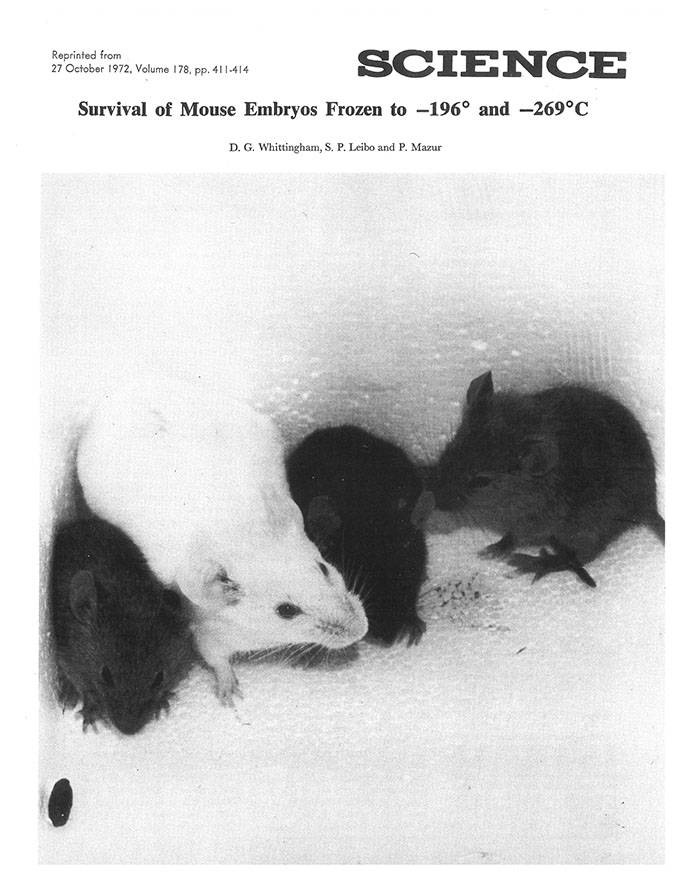
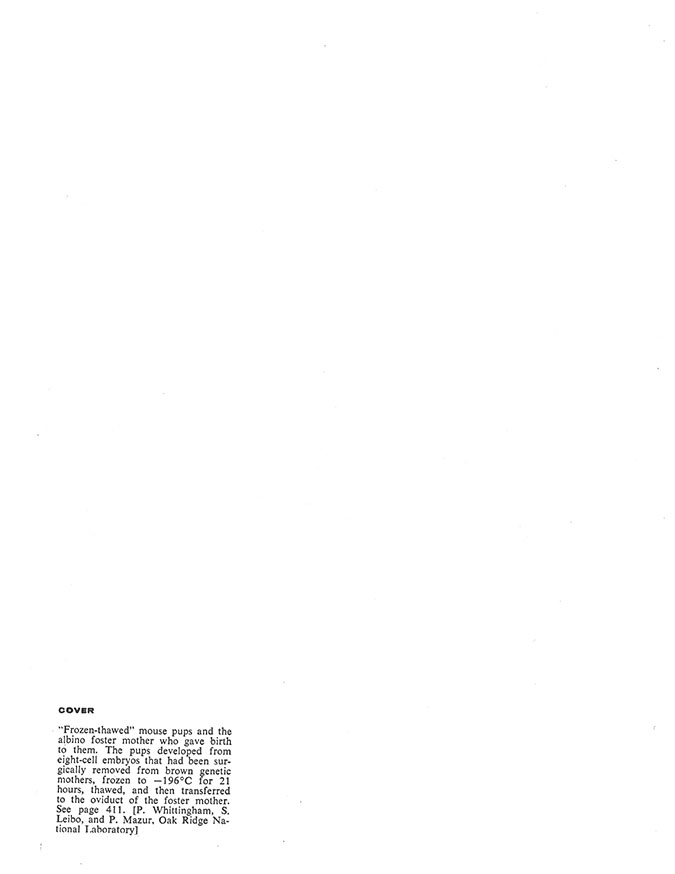
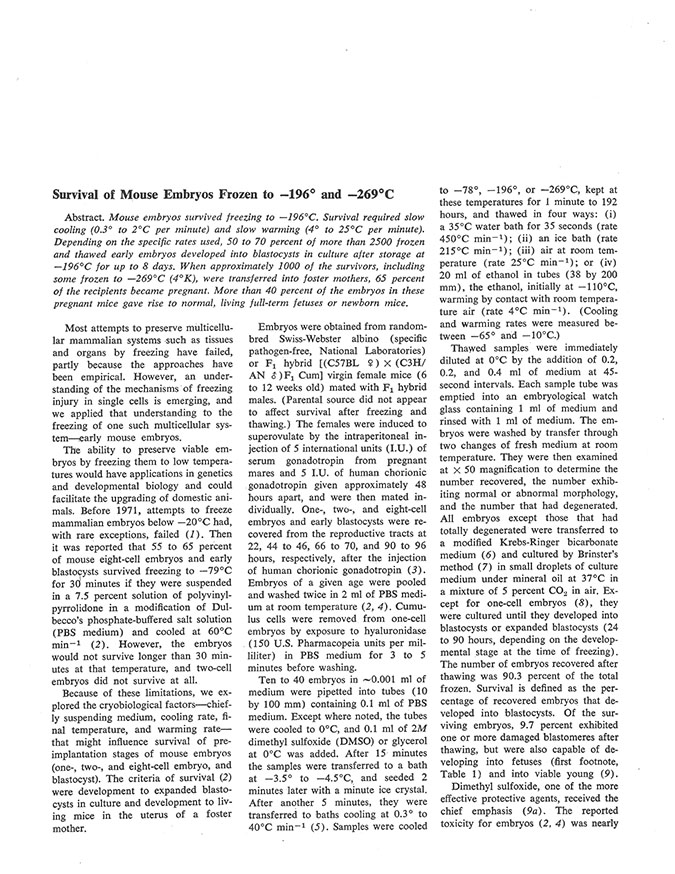
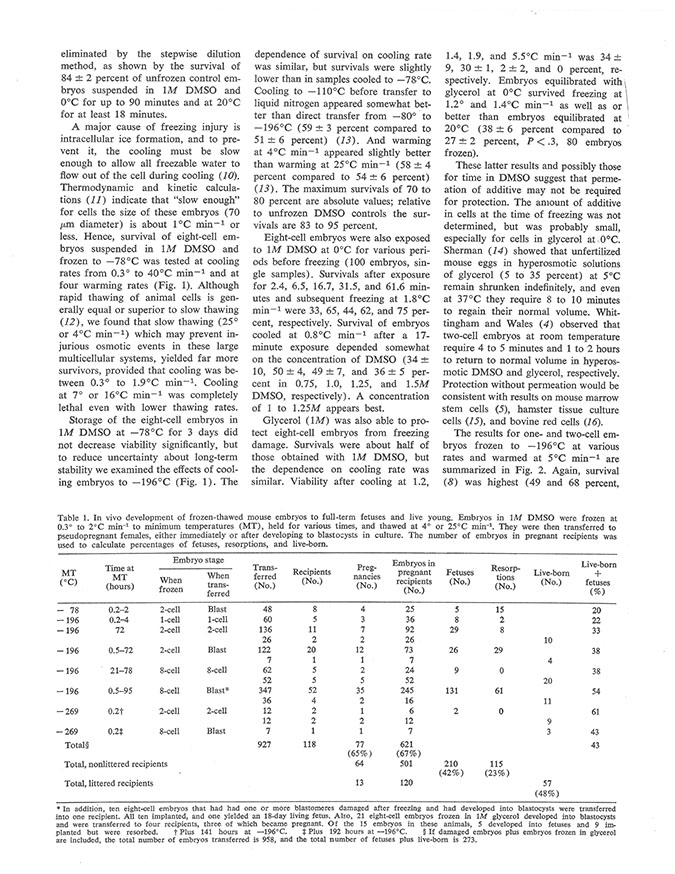
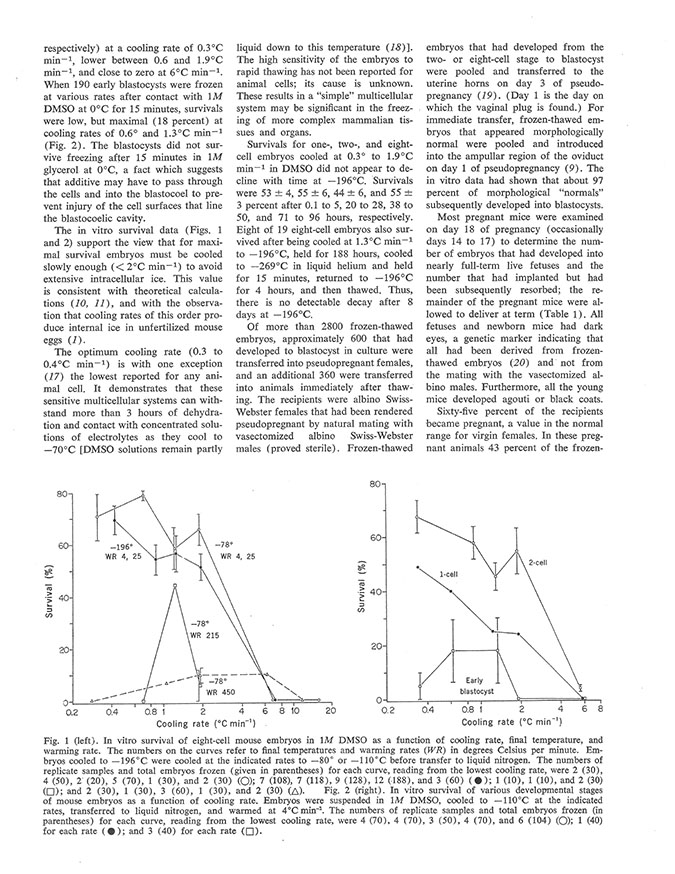
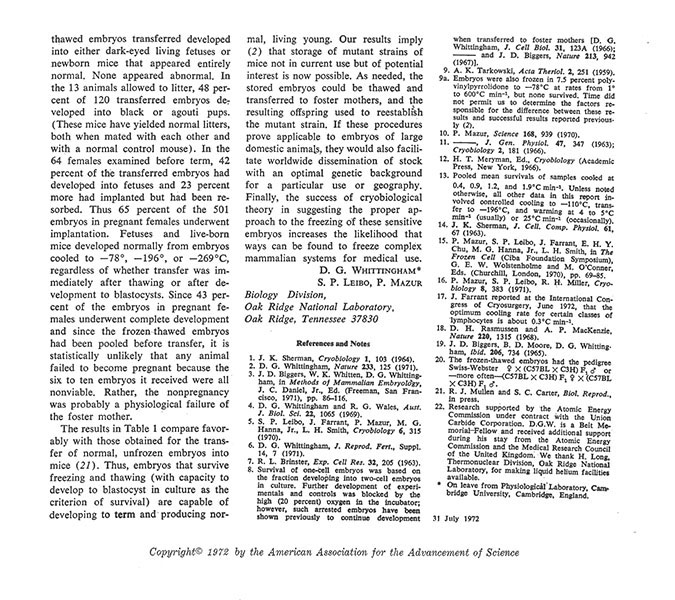
Published Mazur Chapter
